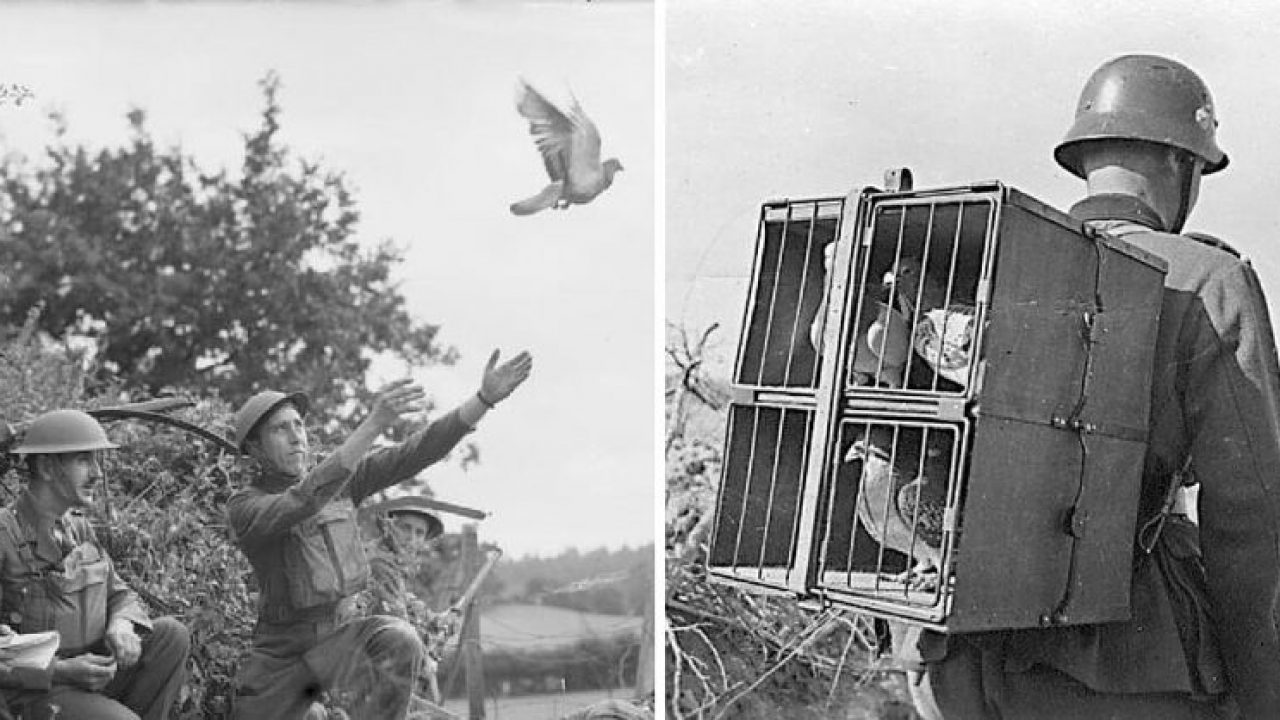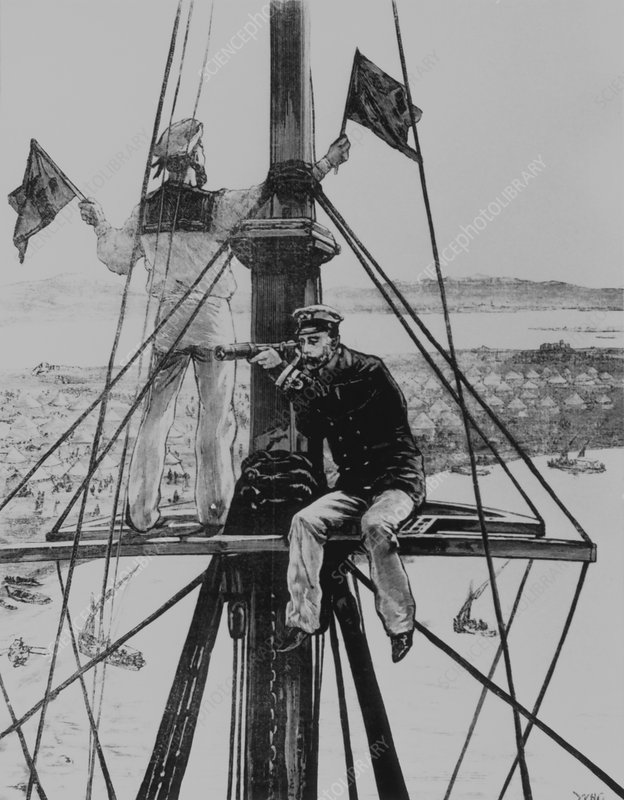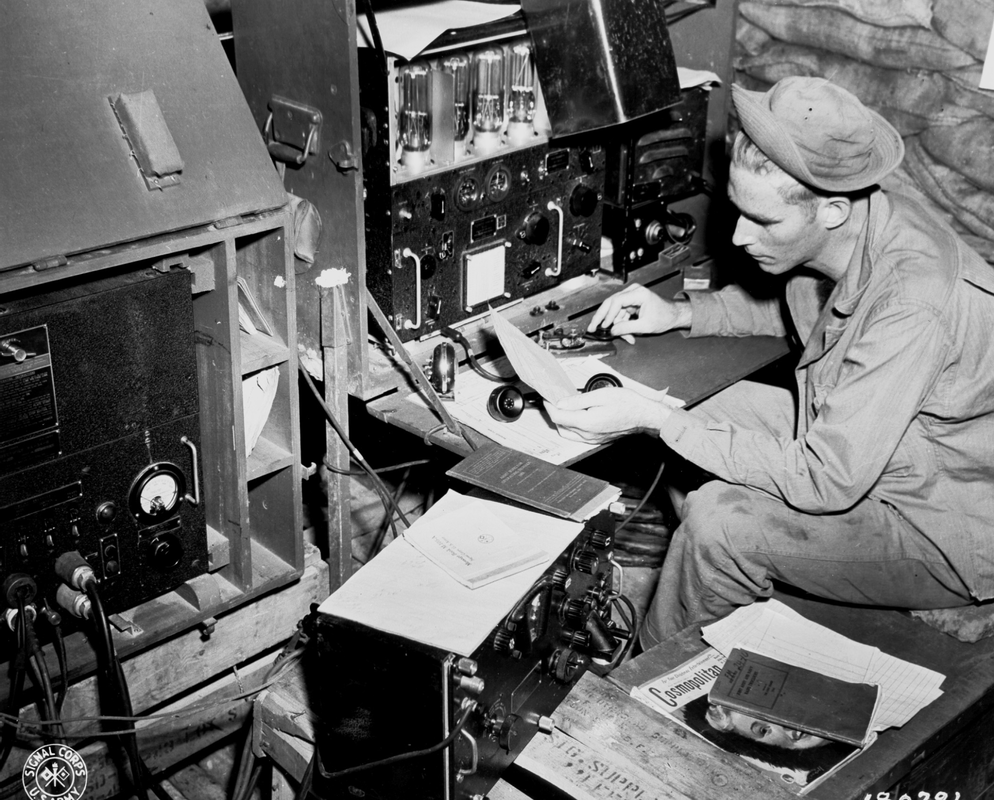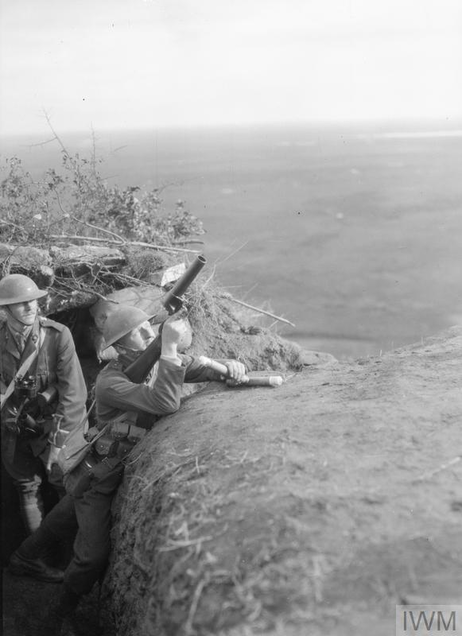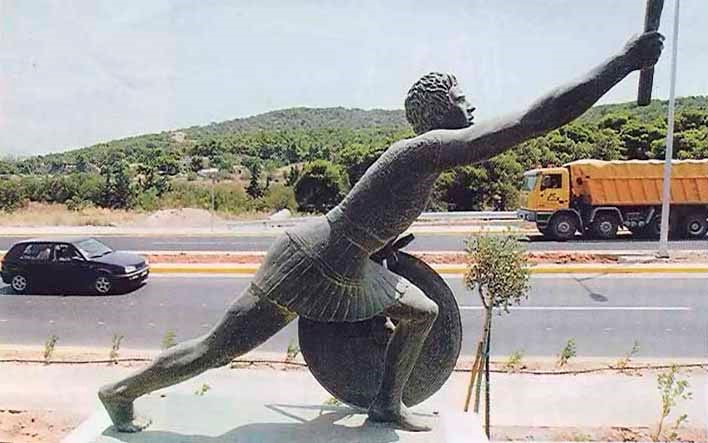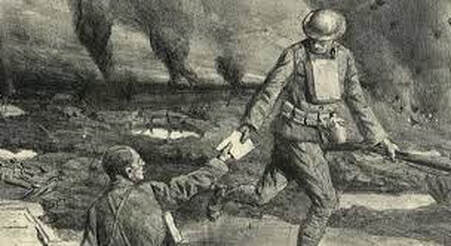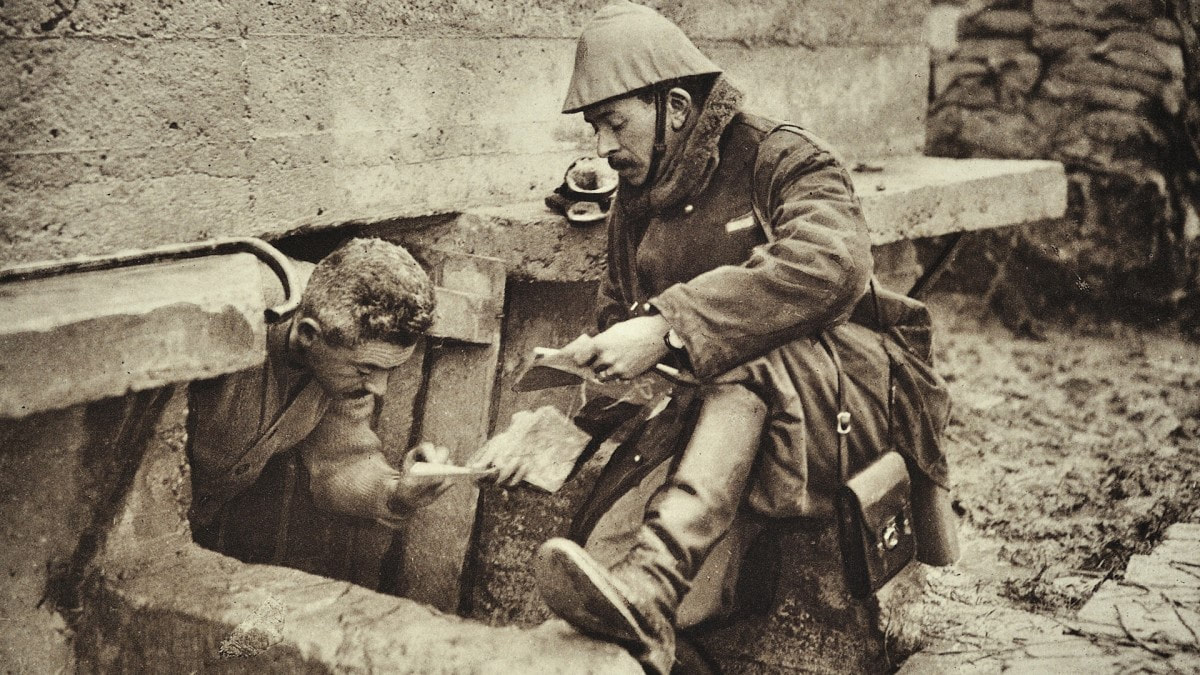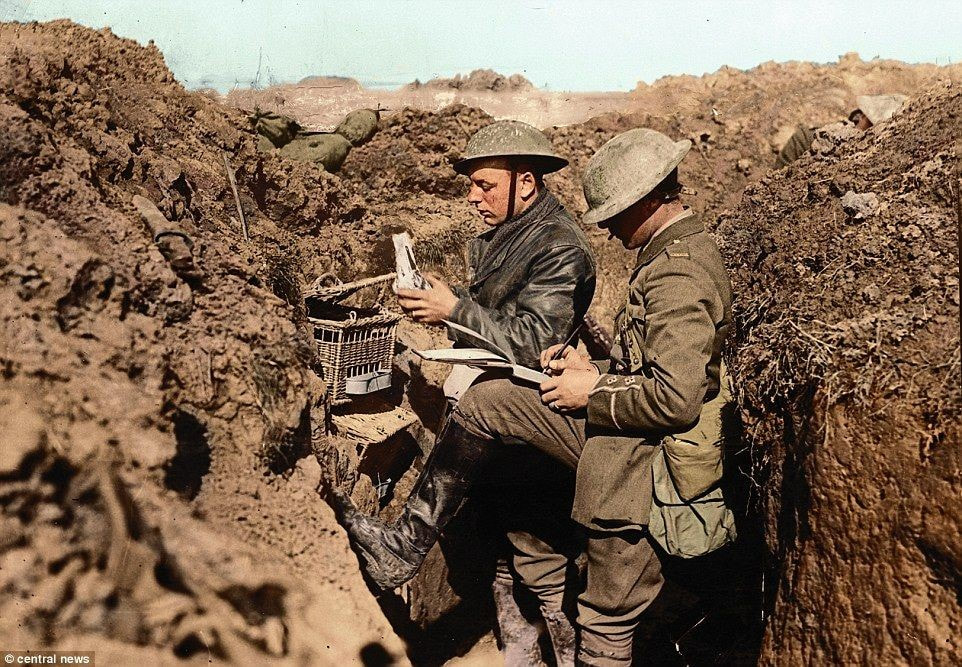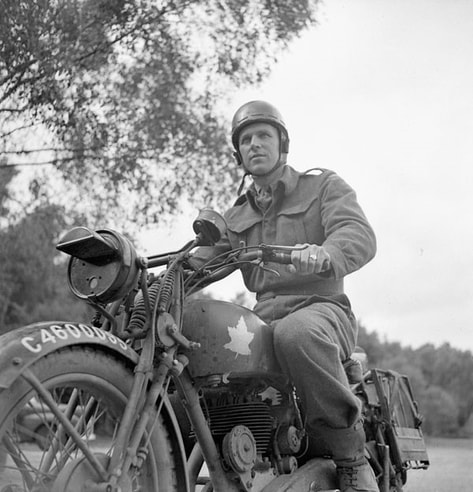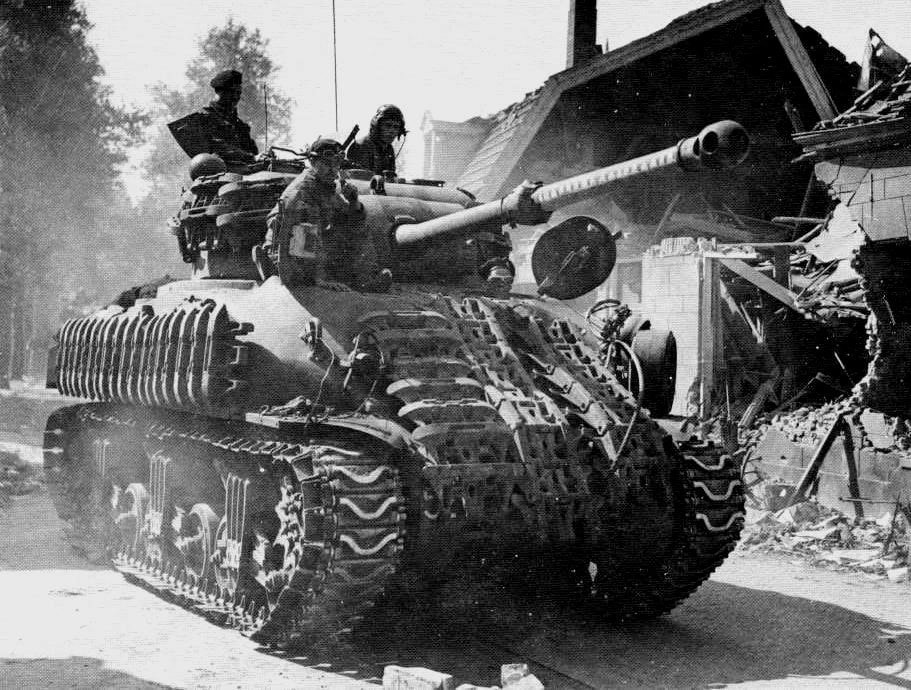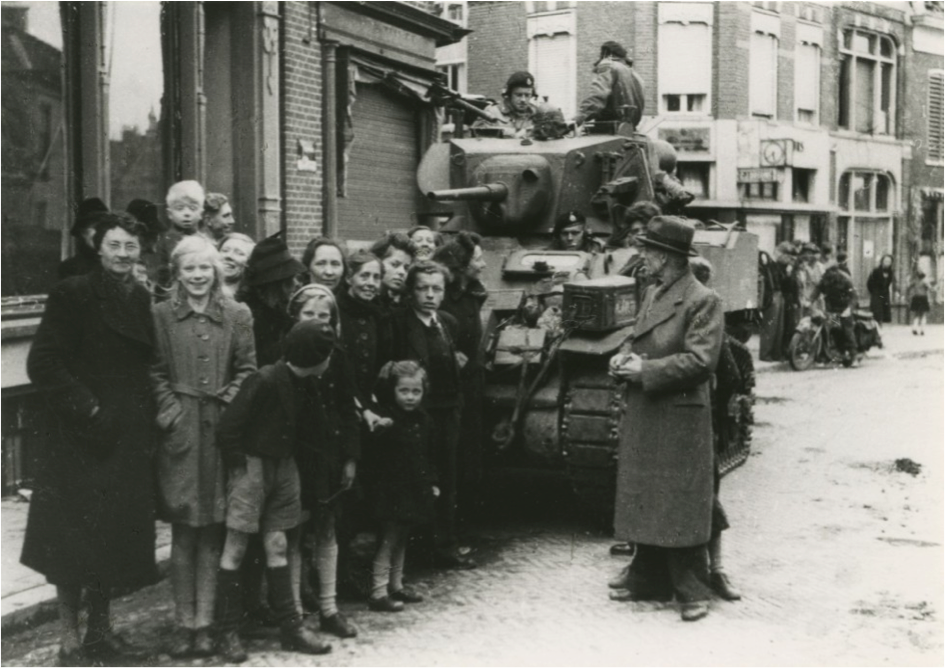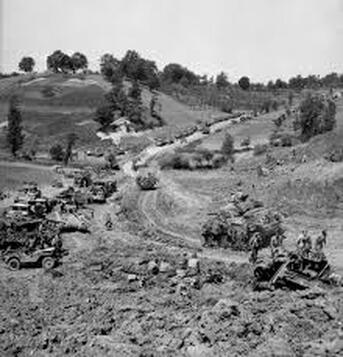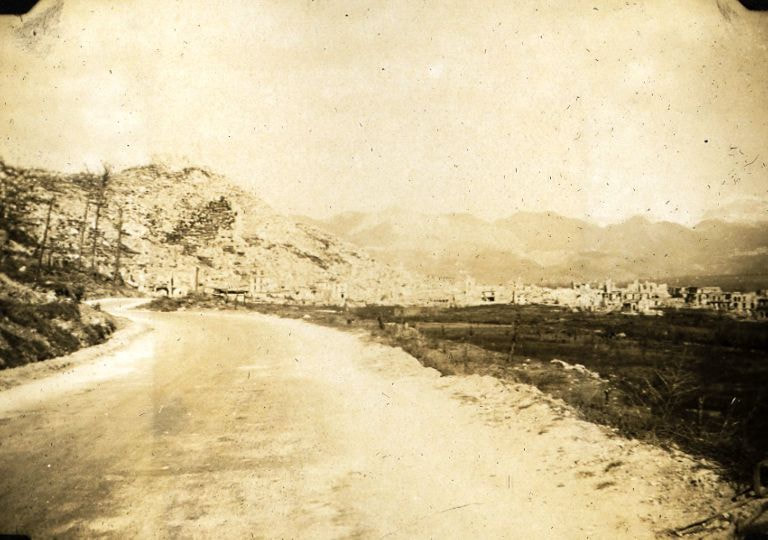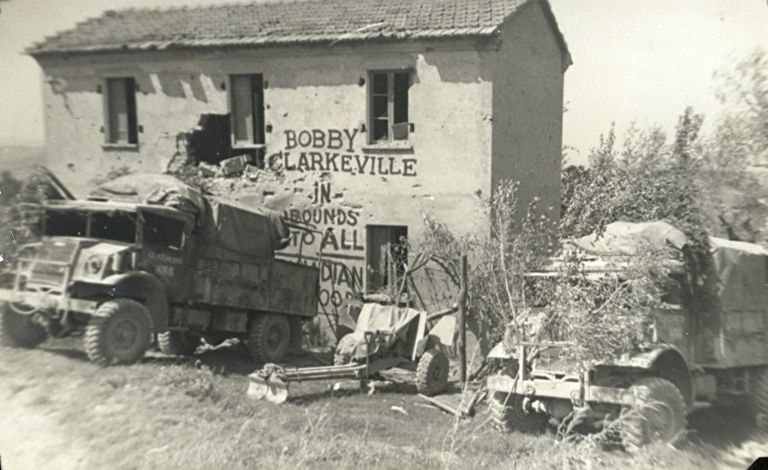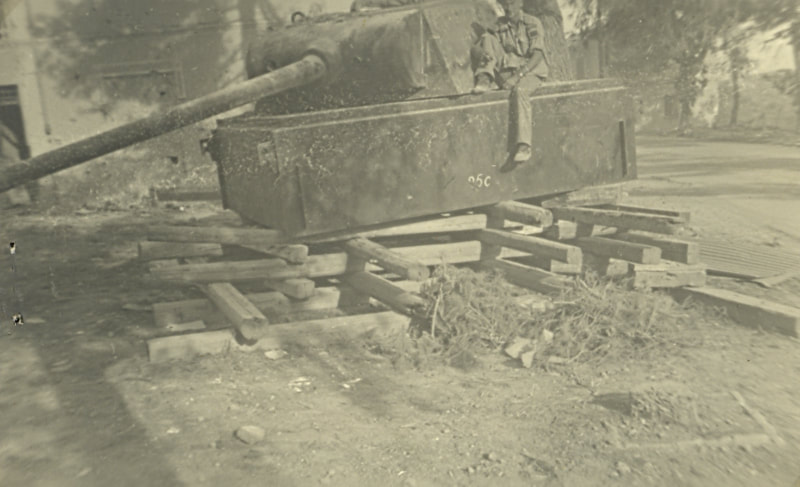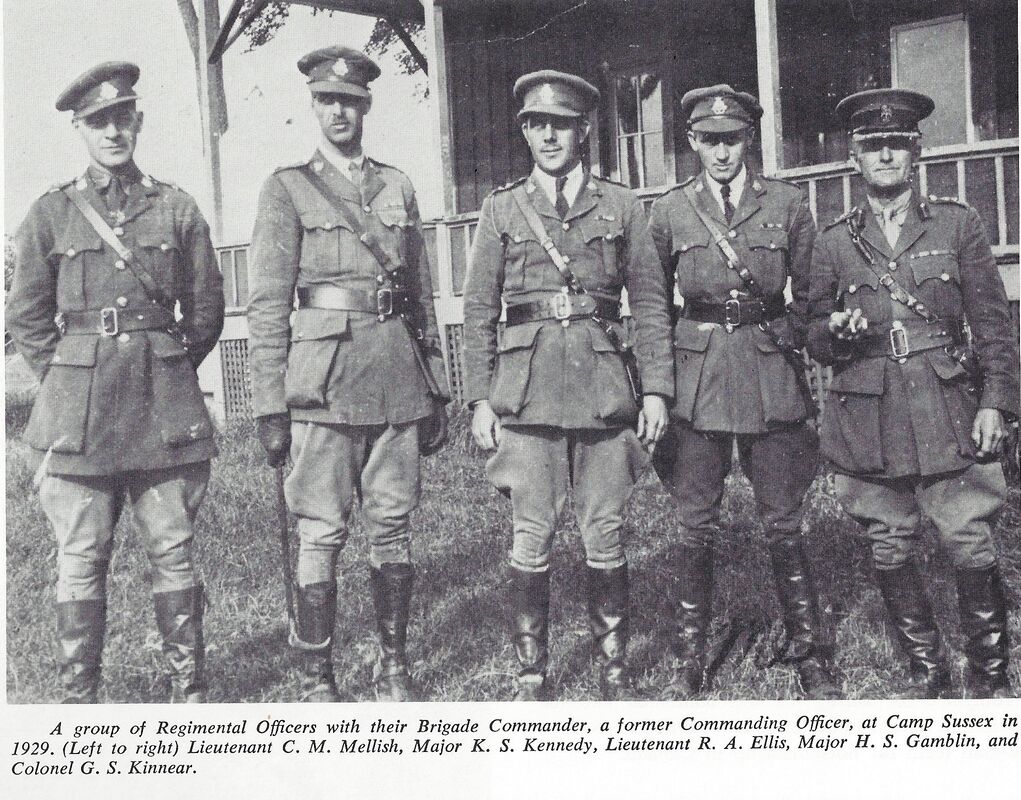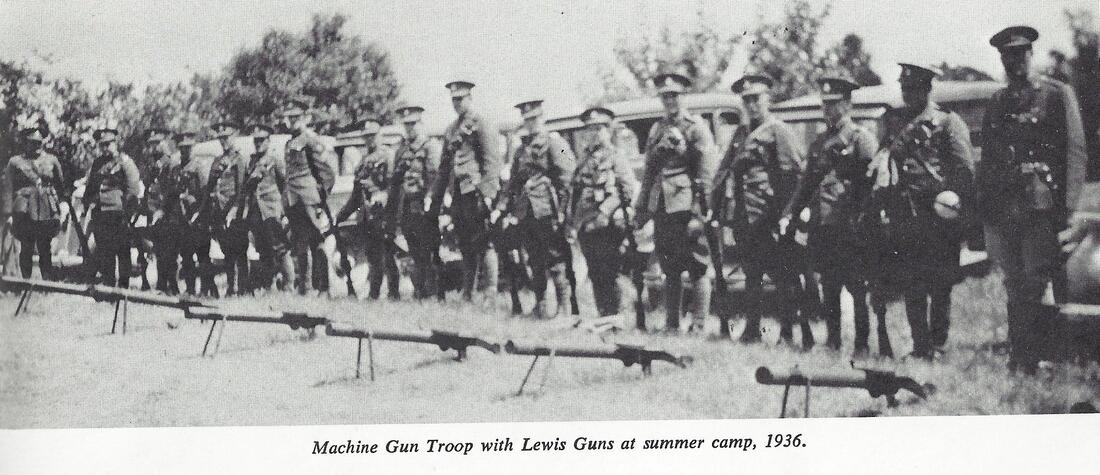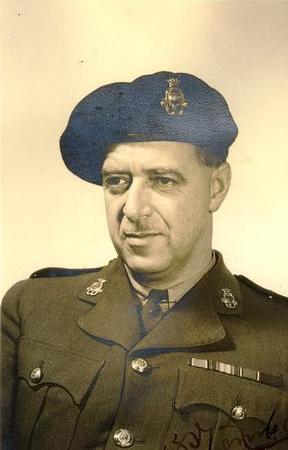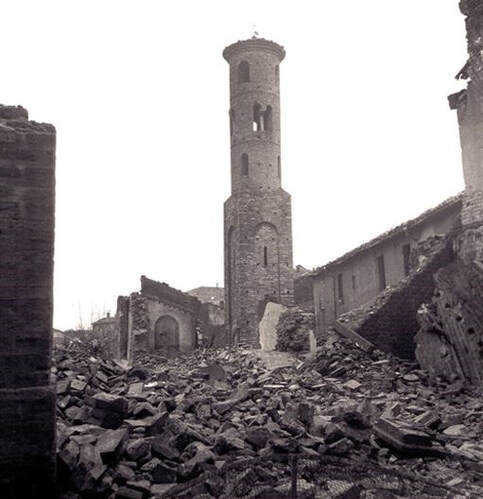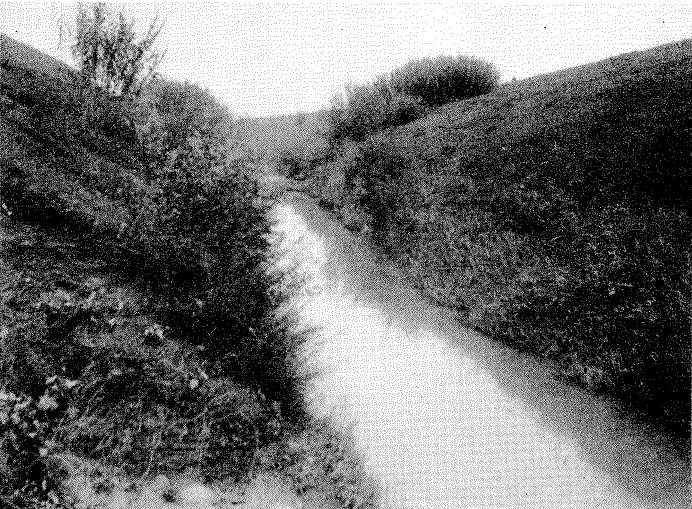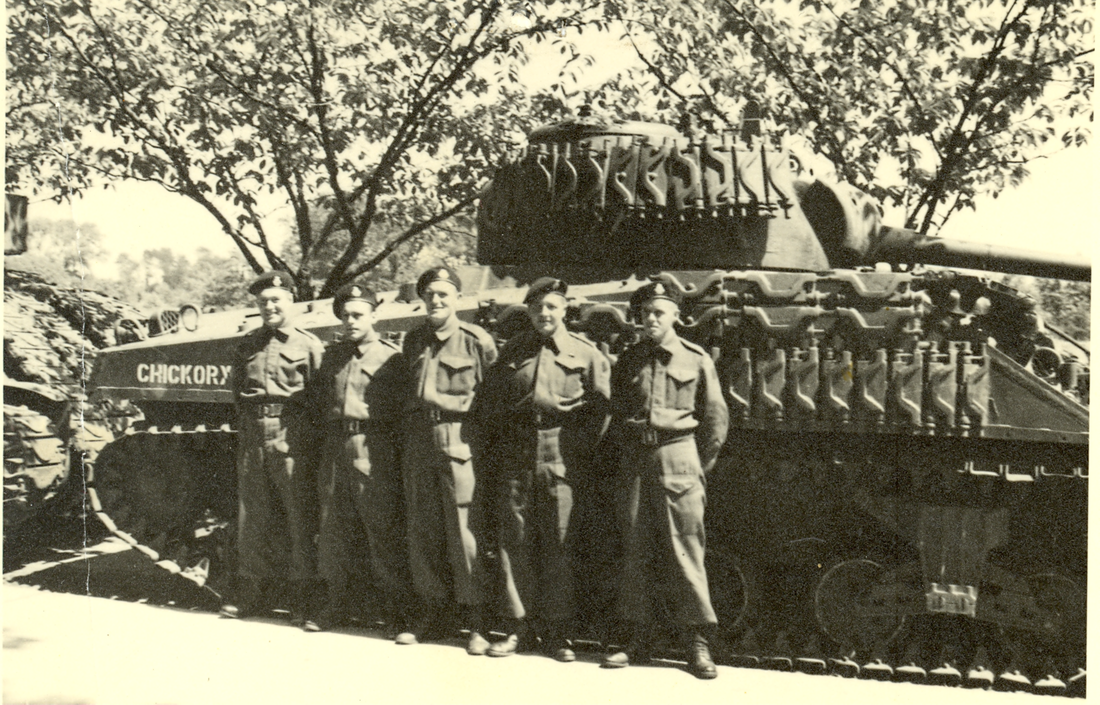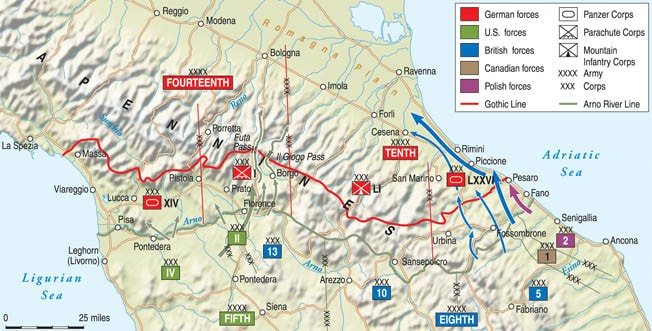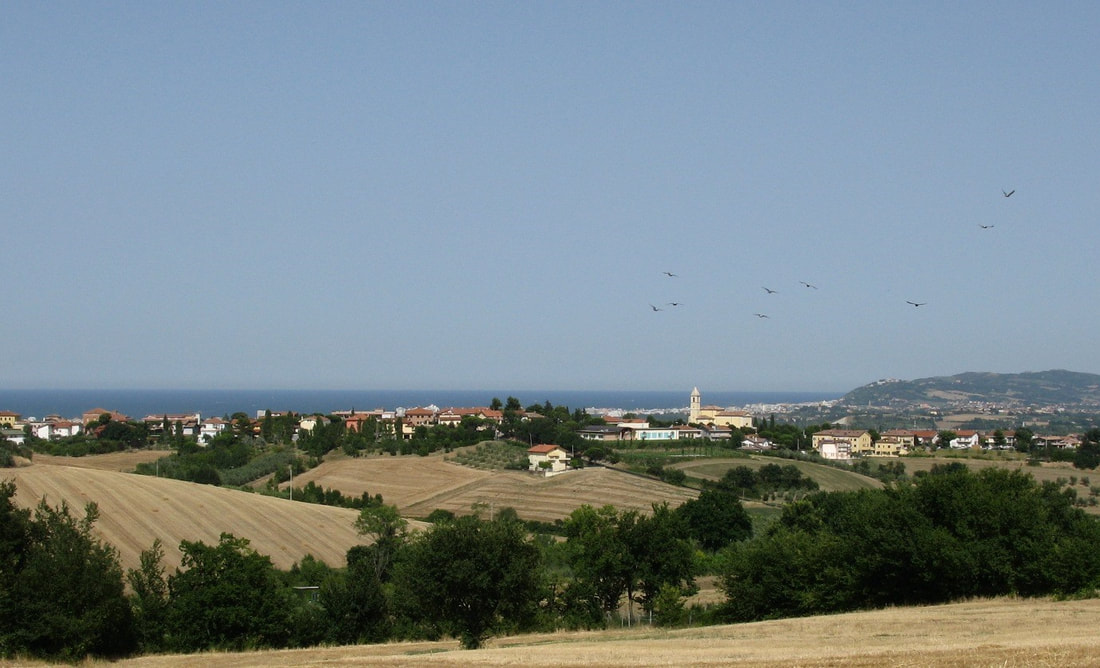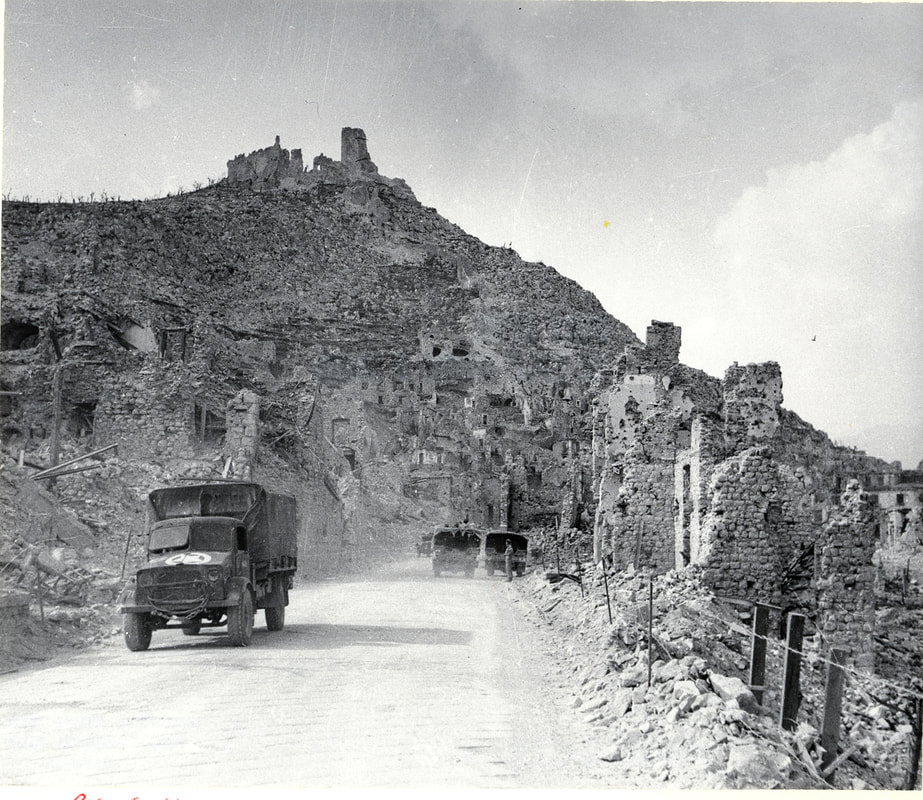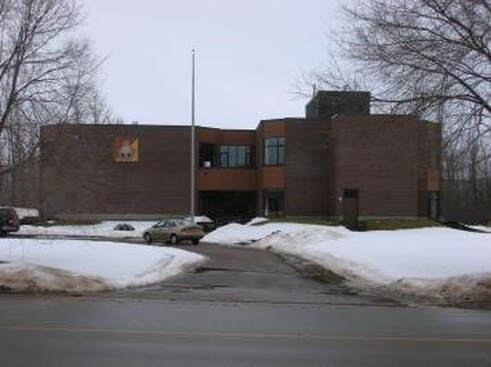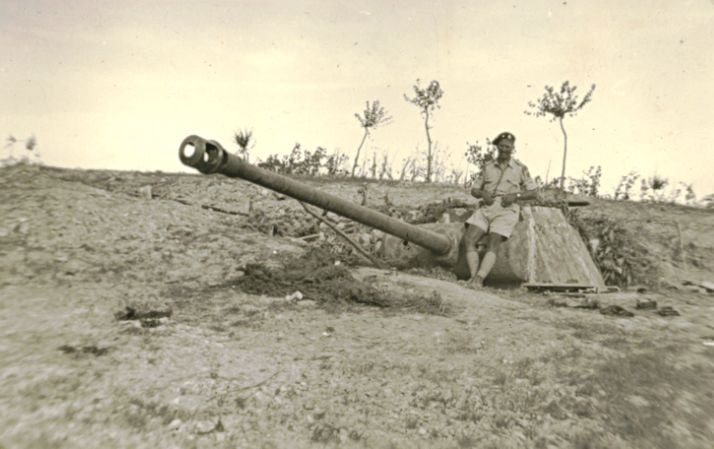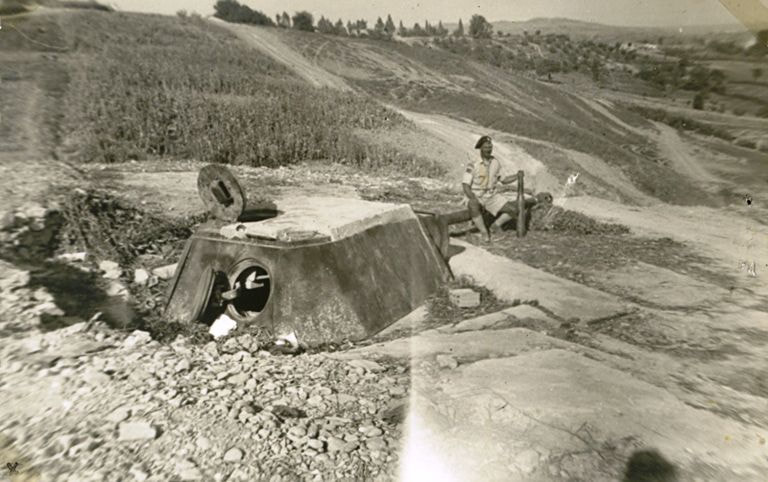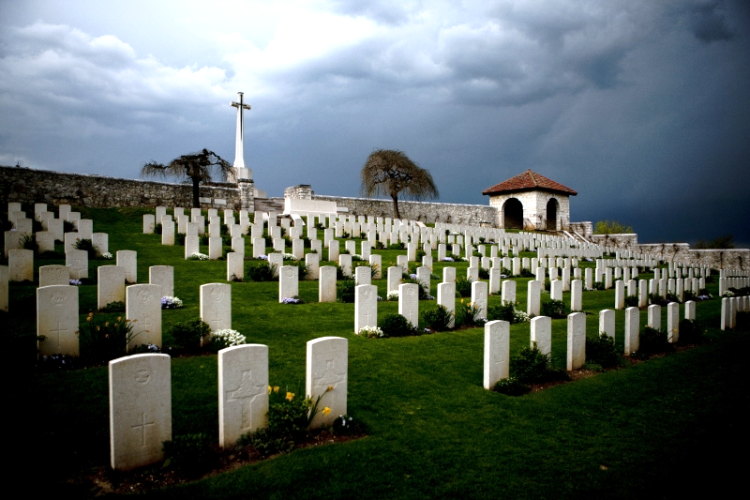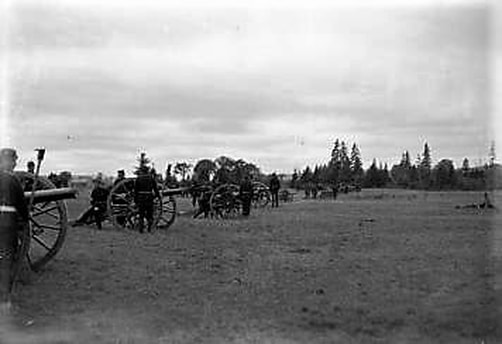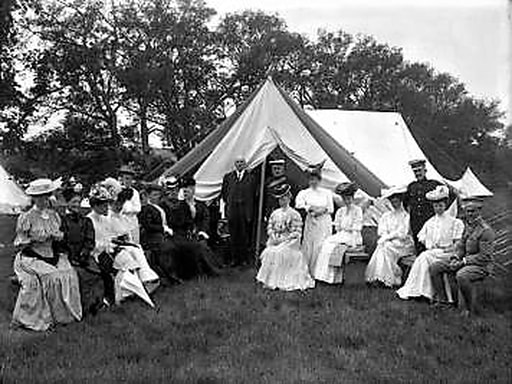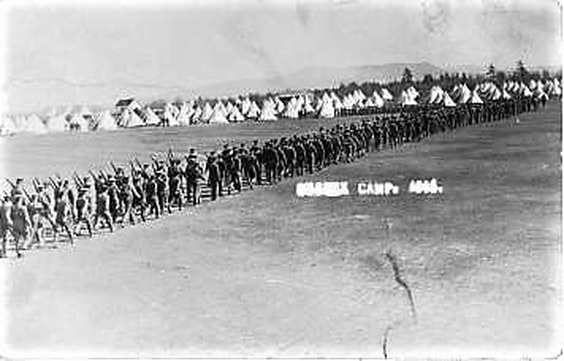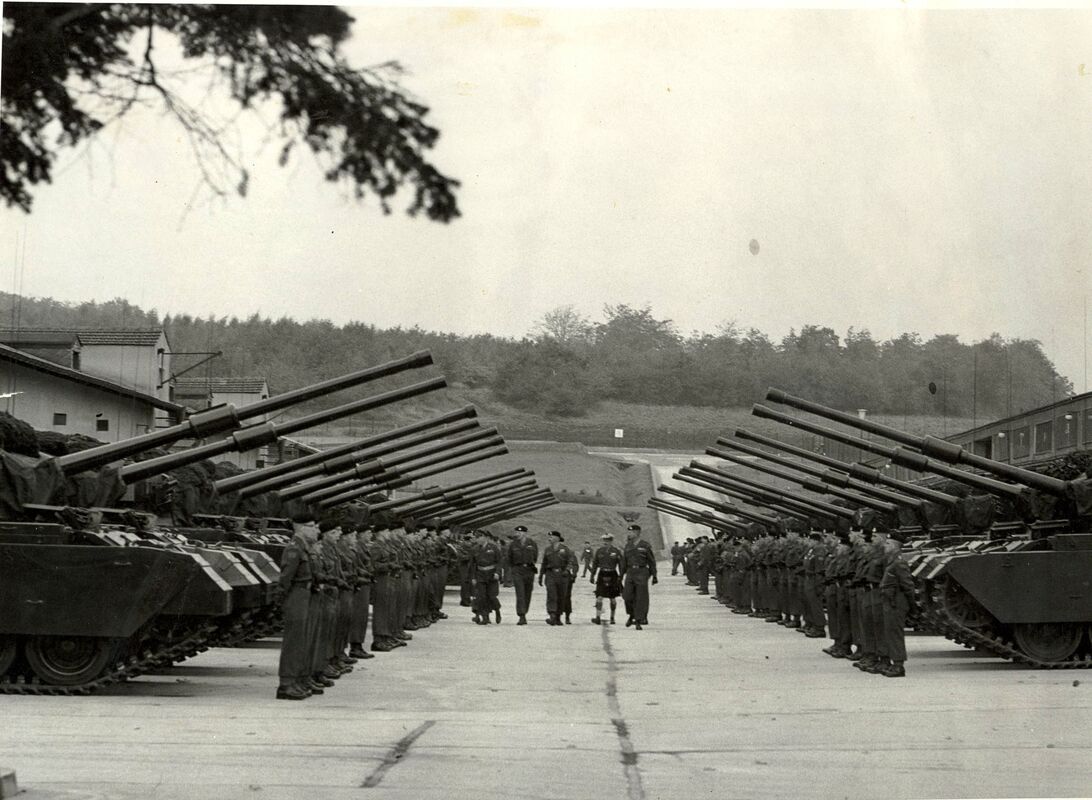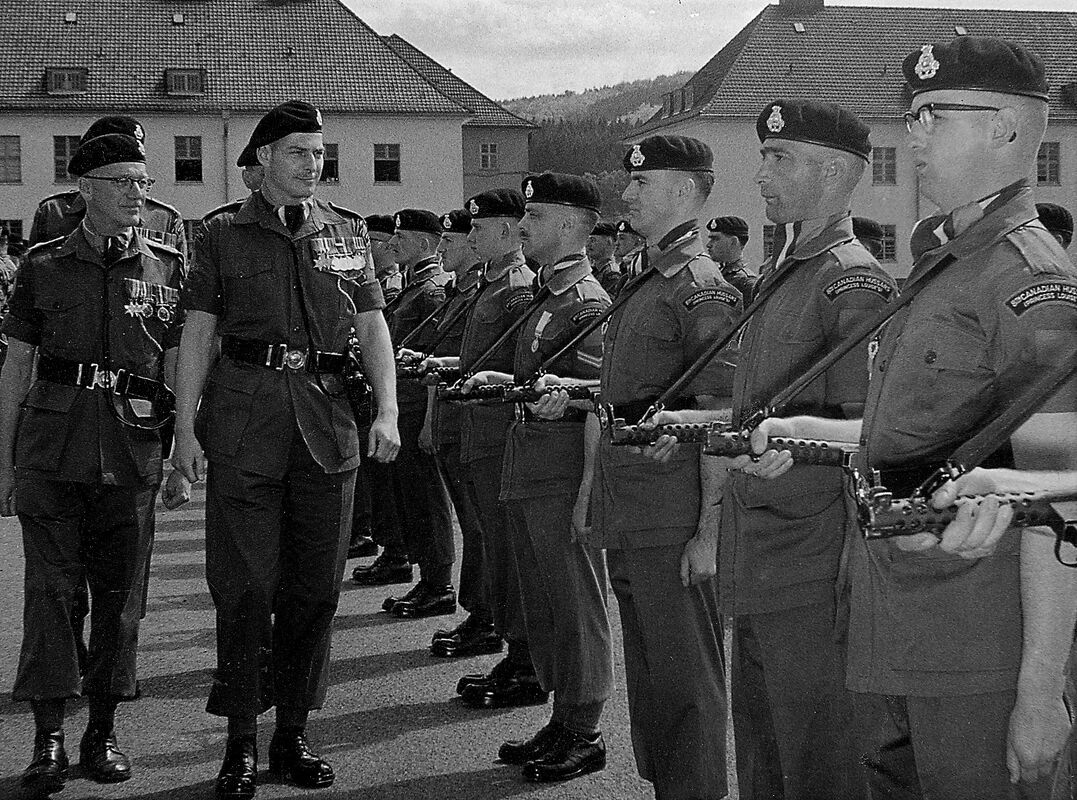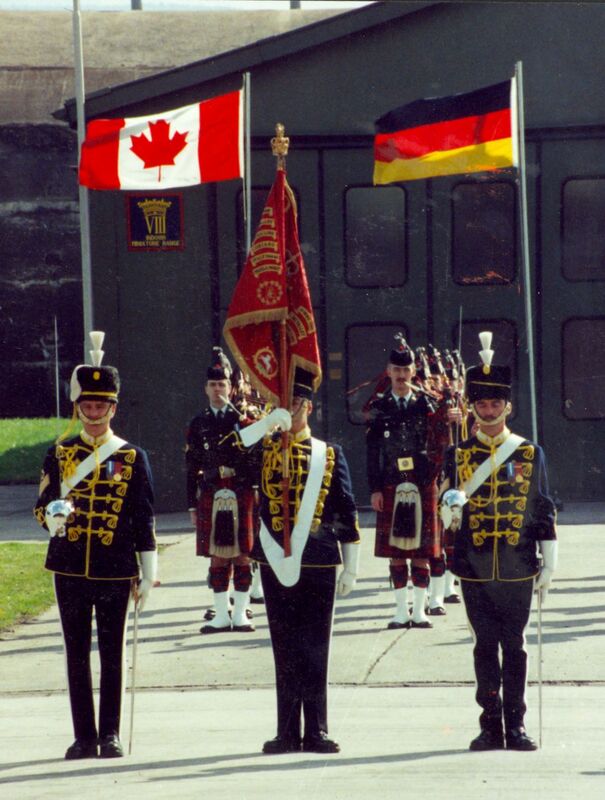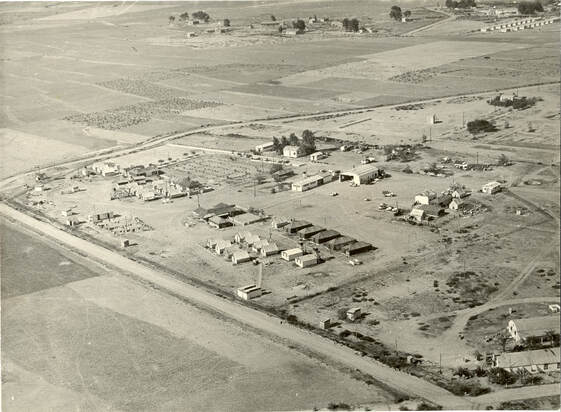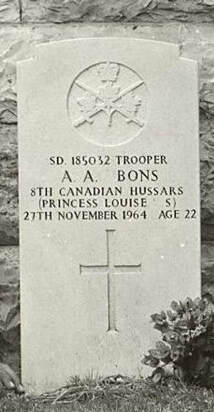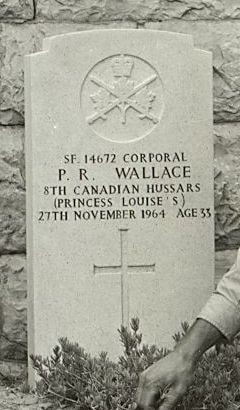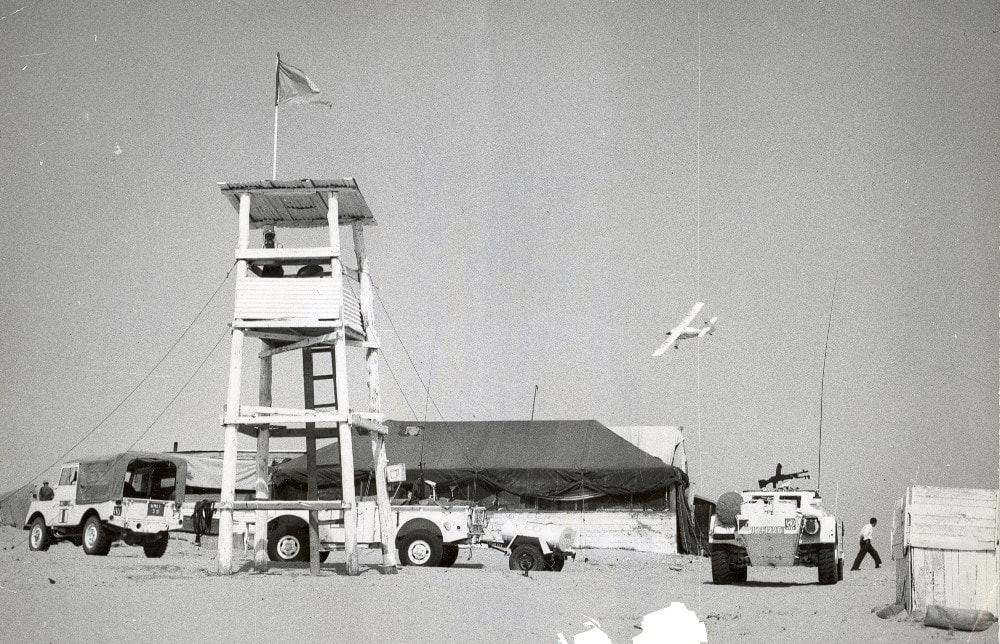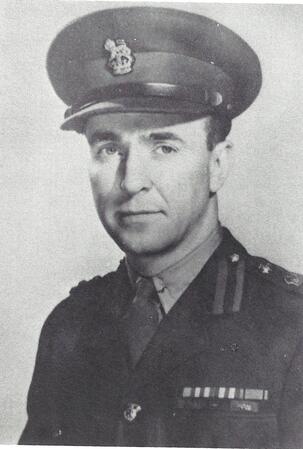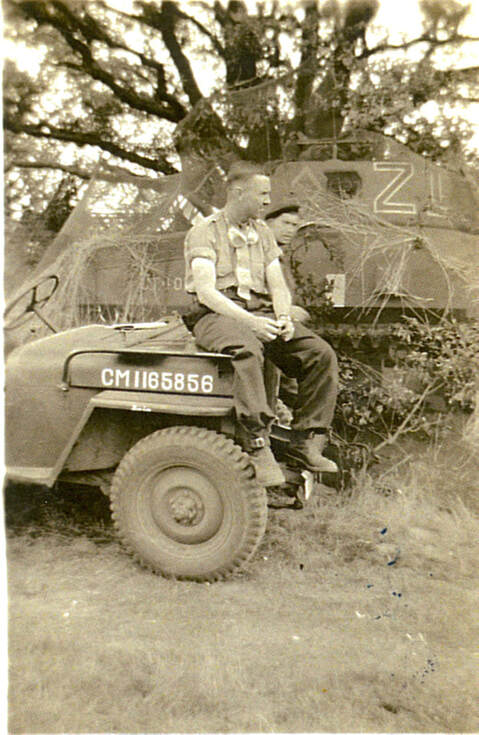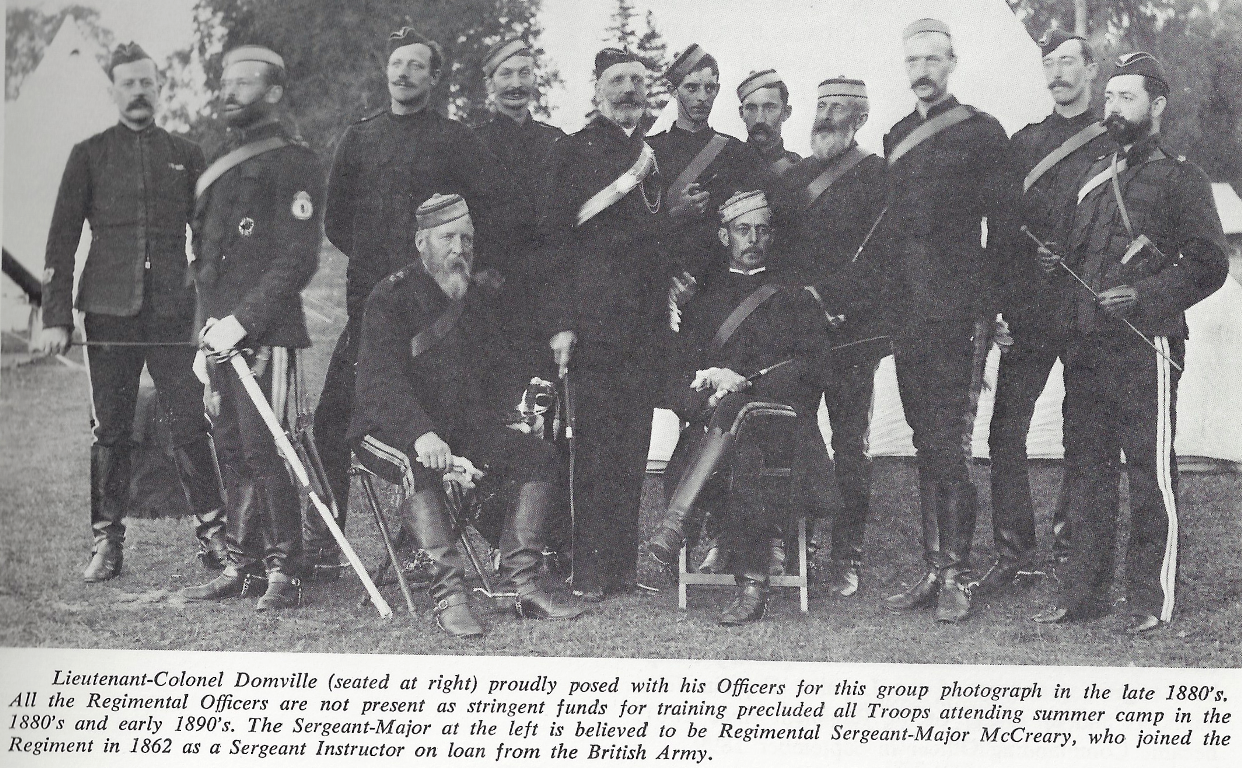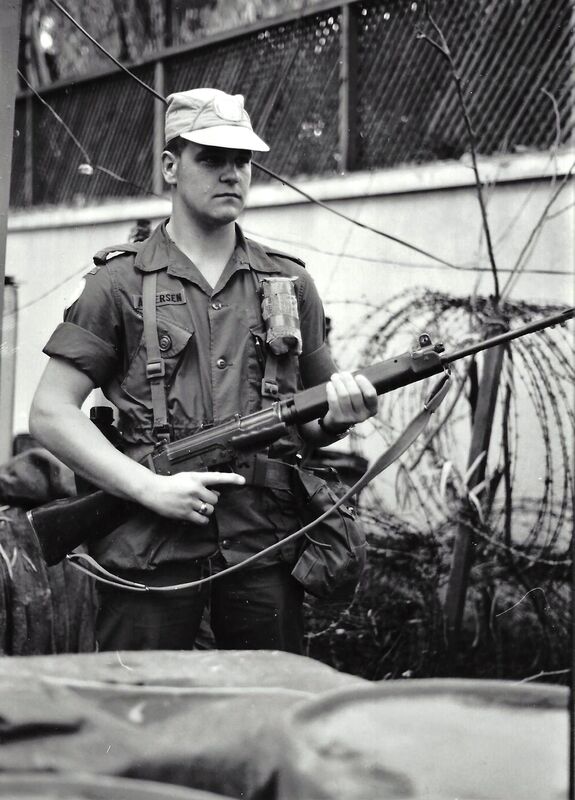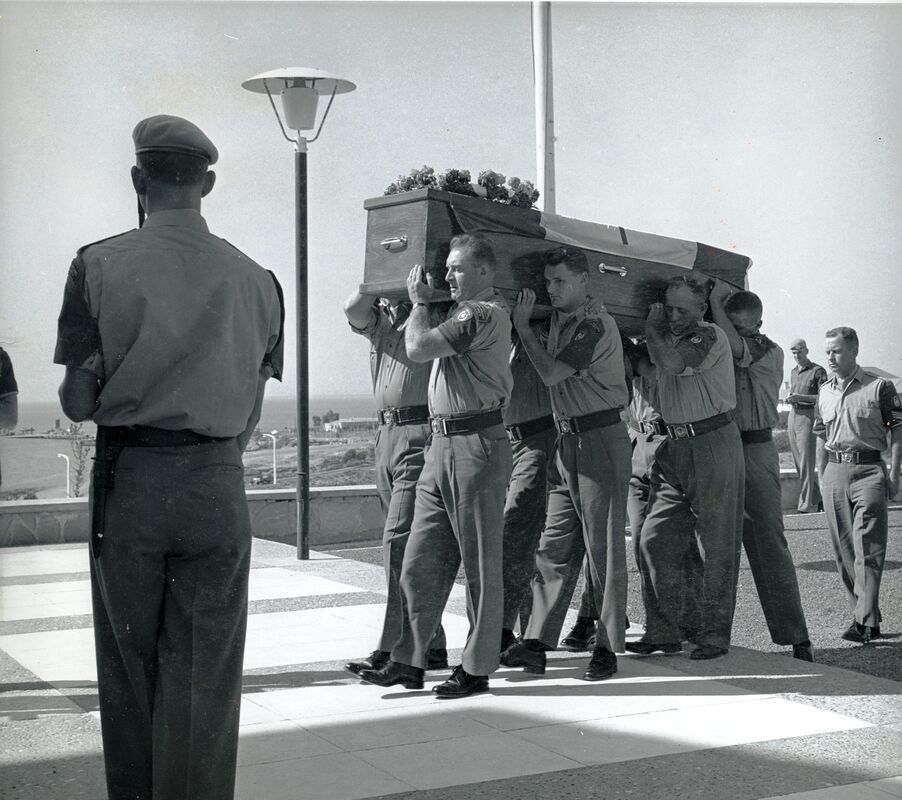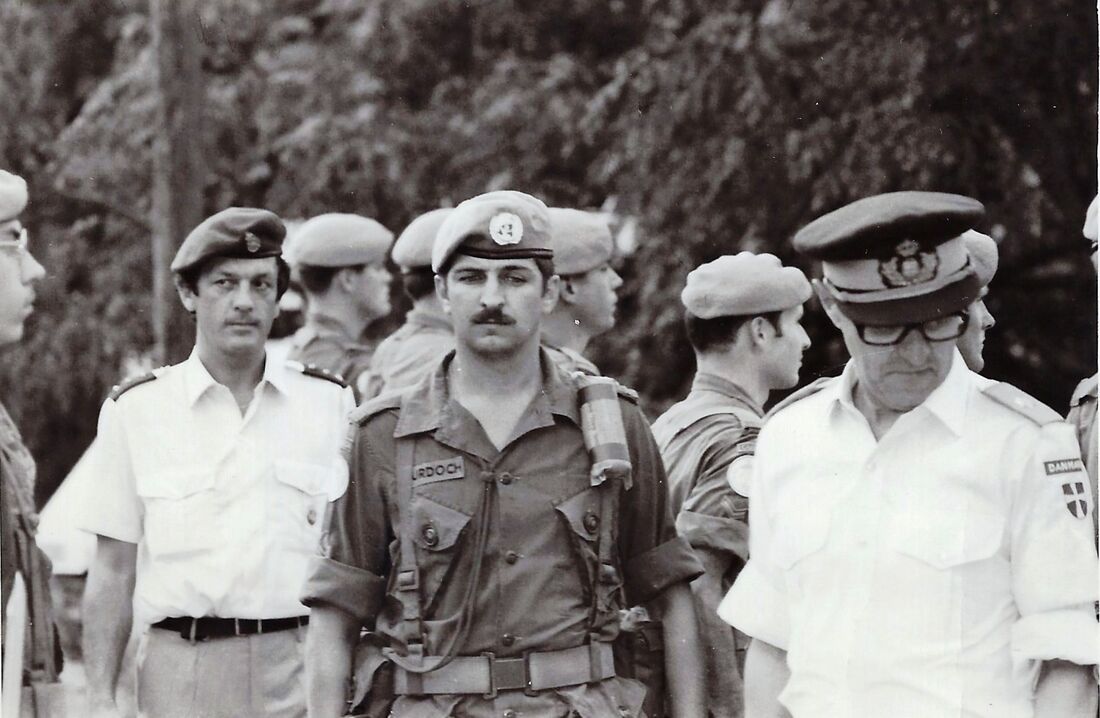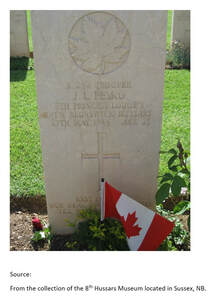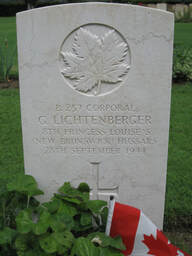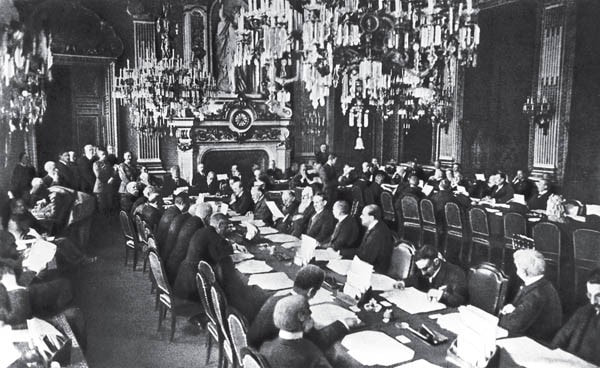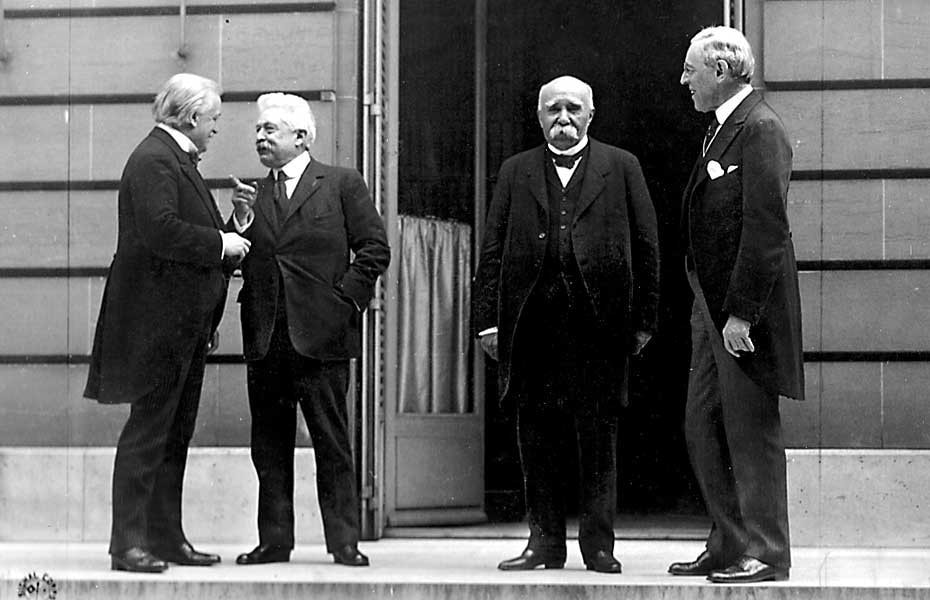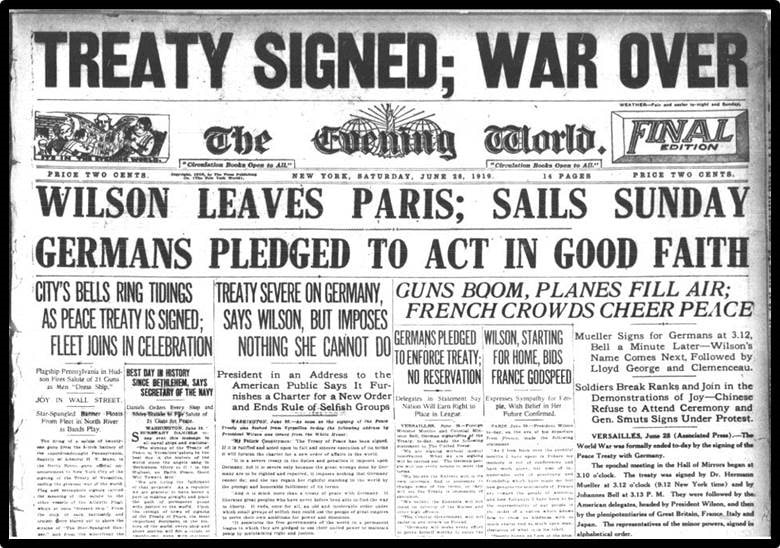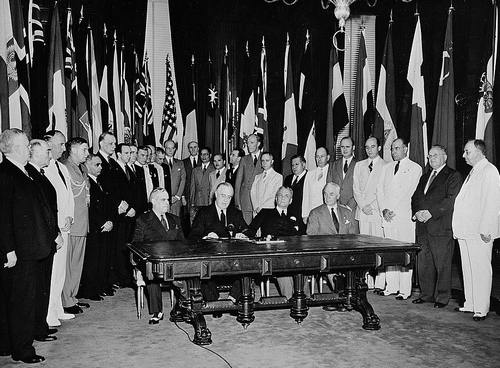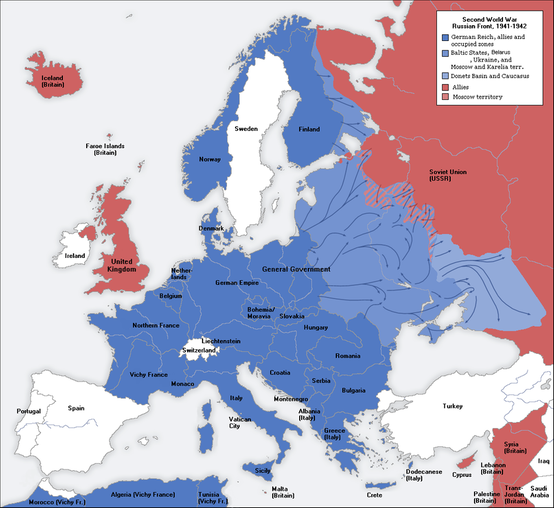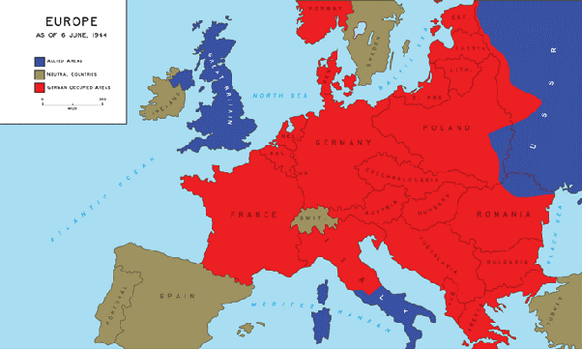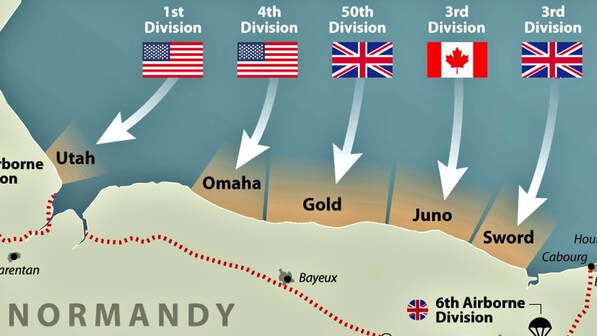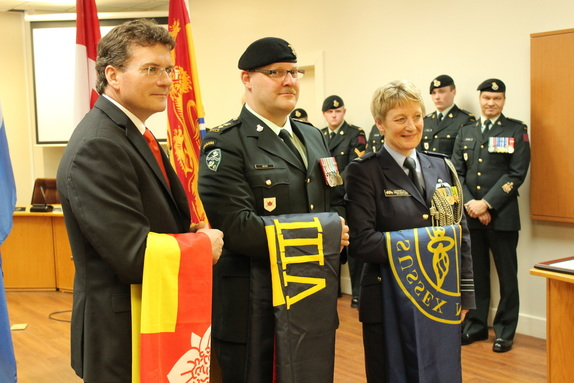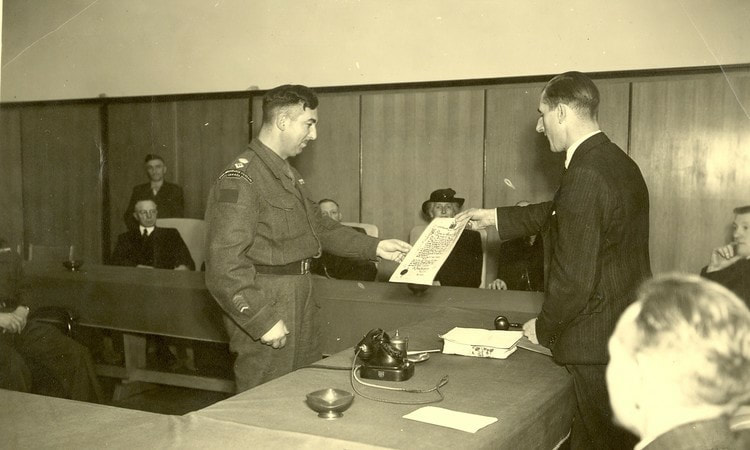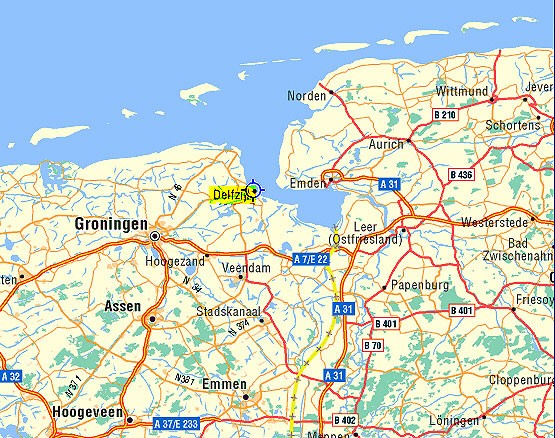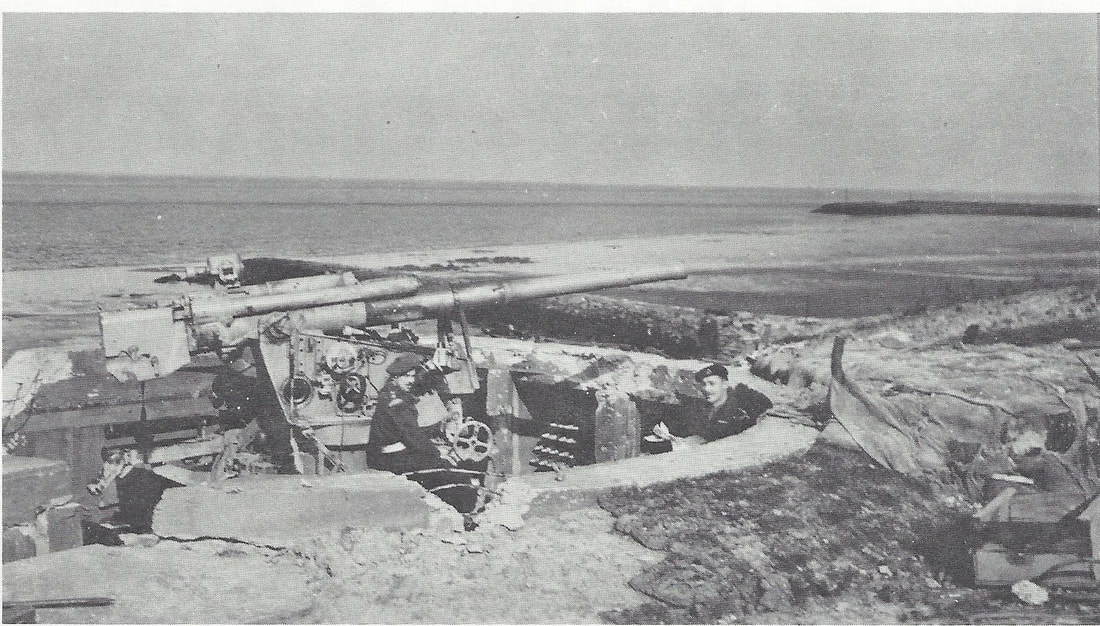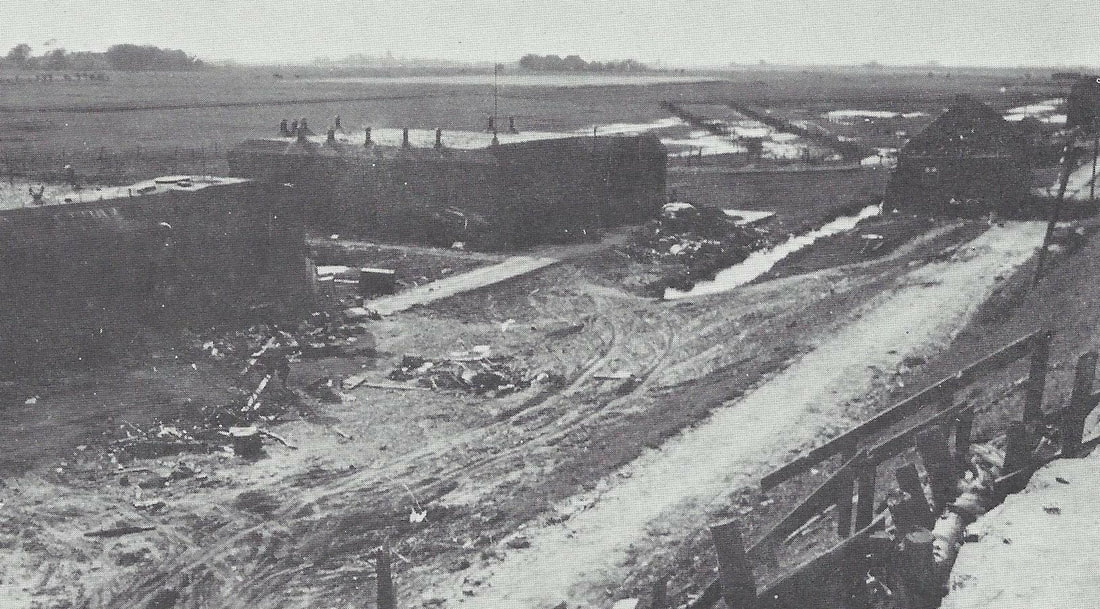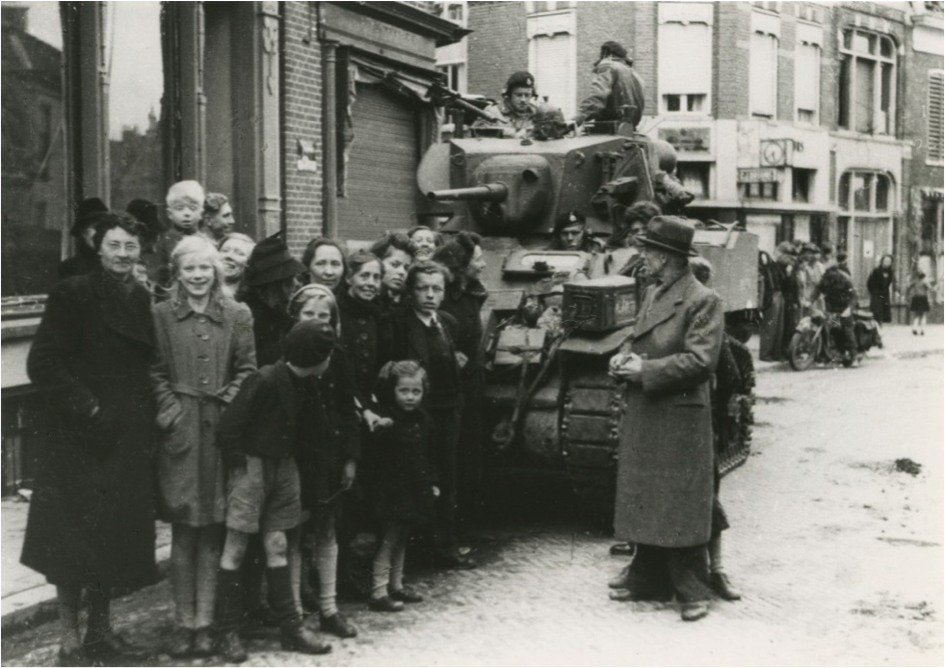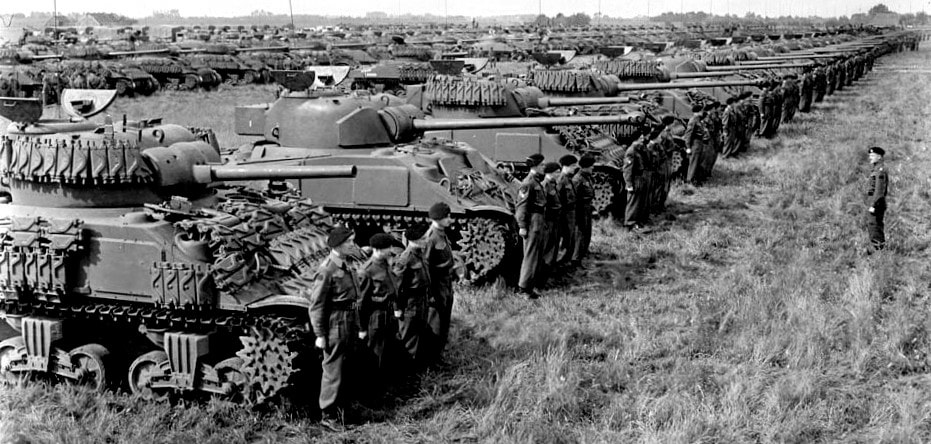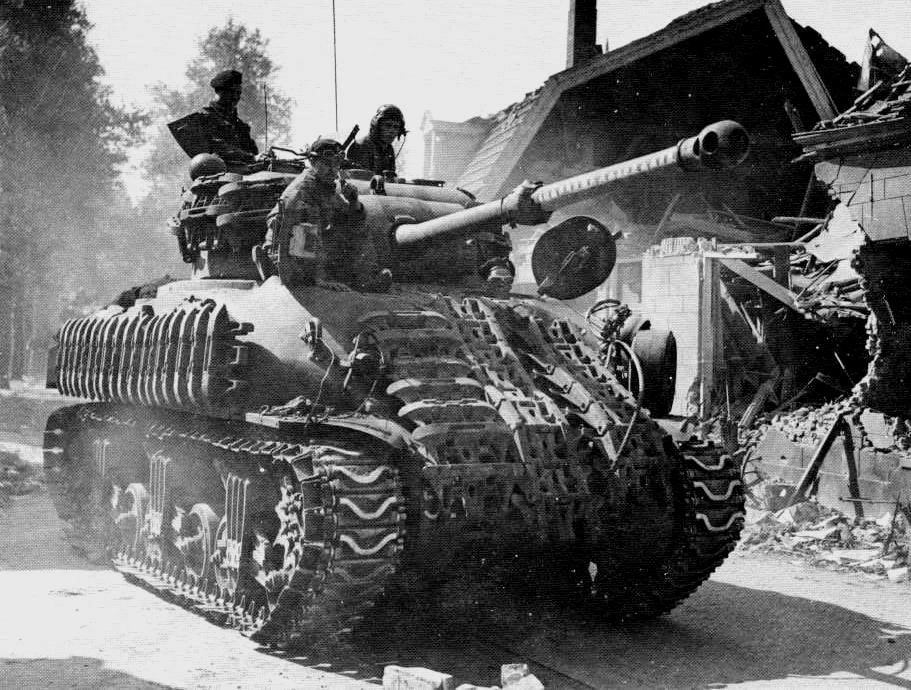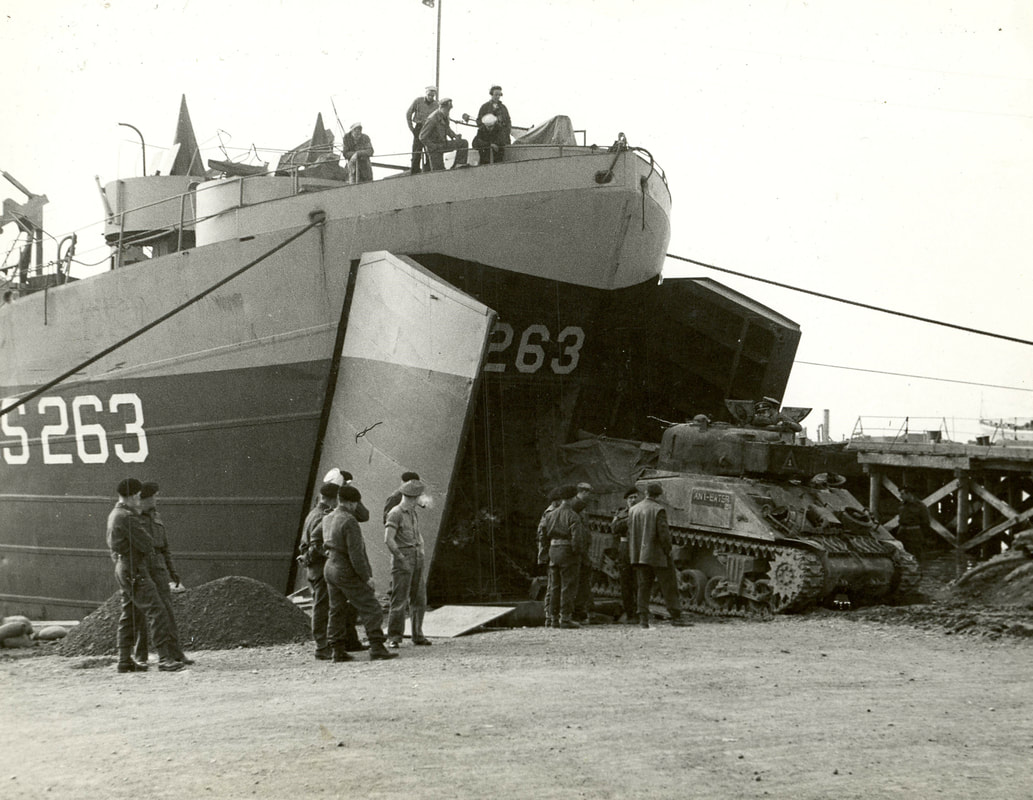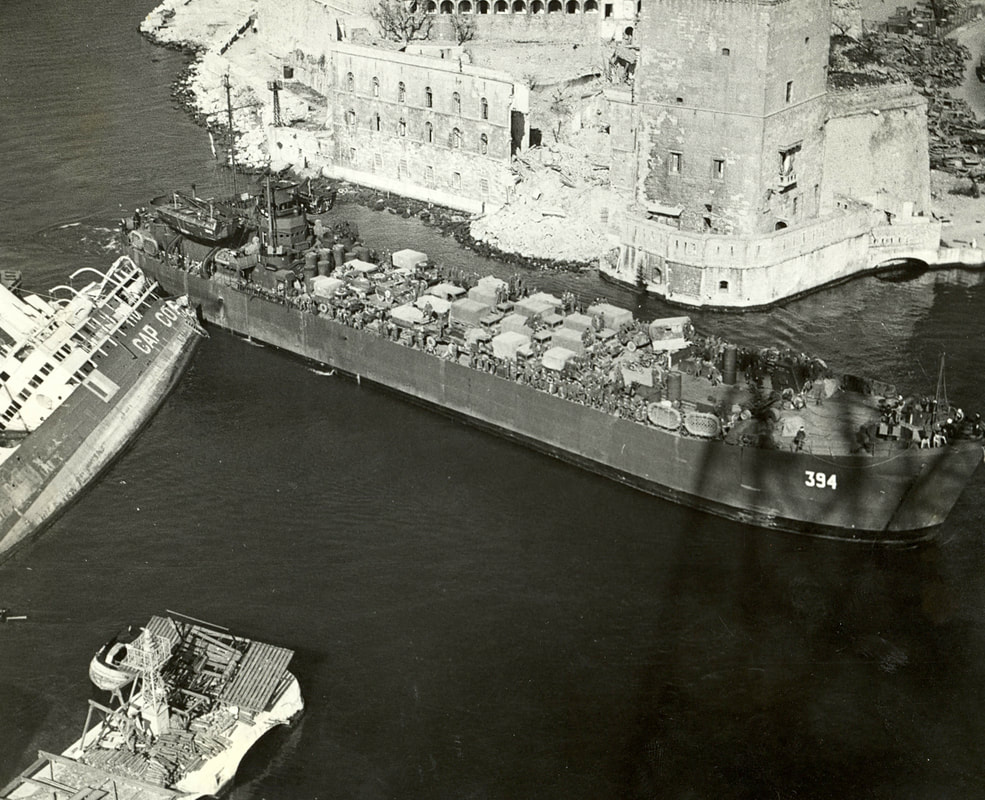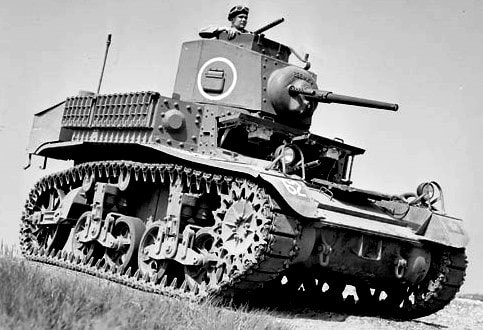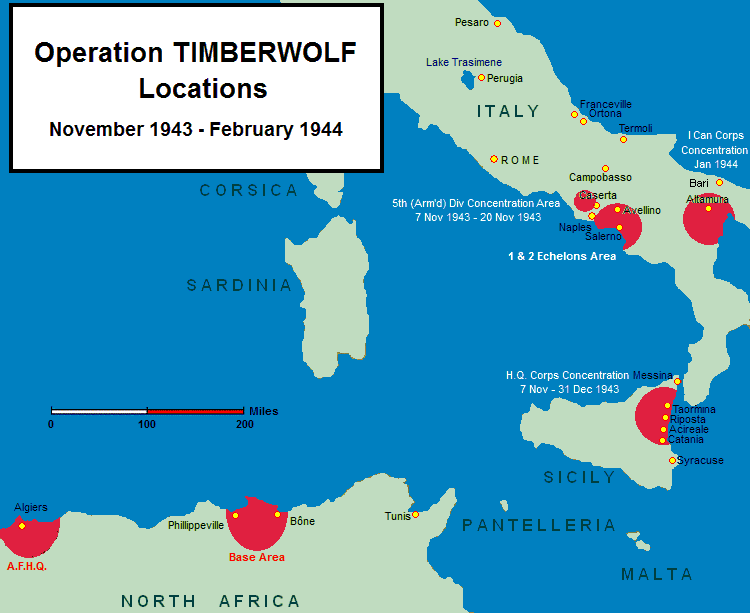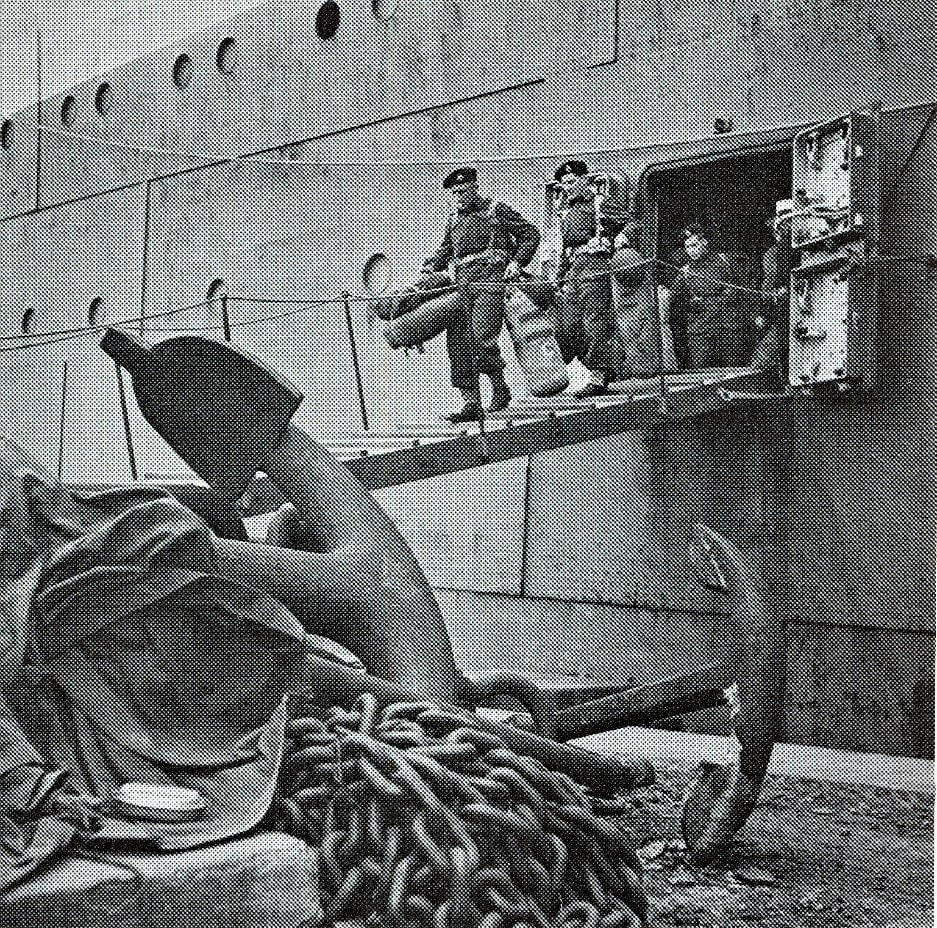Unfortunately, the telegraph was quickly phased out for more modern equipment. Technology was heavy, expensive, and required delicate care to remain working. Wires would be subject to gunfire and bombs, causing them to constantly require repairs. It wasn’t uncommon for a signaller to have to fix 40 cables per day. Wireless transmissions became a priority during the Second World War.
|
HOMING PIGEONS were a large part of ensuring communication between the front and rear lines. With all the chaos happening on the ground, pigeons used to offer immense help by carrying messages through the sky. Although shells still riddled their paths, pigeons made for a far smaller target. Harming a pigeon in any way was considered a great offense, and could result in a fine or even imprisonment. These birds were extensively cared for. They would be groomed, protected from gas fumes, transported in mobile carrier vehicles, and brought into the dugouts during attacks. In most cases, they were cared for better than front line horses. A common practice when sending pigeons was to send two with the same message to ensure its arrival. During Operation Jubilee, one pigeon fondly nicknamed “Beachcomber” by the troops delivered the first news of the Dieppe Raid in France 1942. He carried a small container with the message inside attached to his leg, and he set off alone. This communication proved to be vital, as allied commanders had lost sight of the troops on the beaches. Beachcomber was awarded a Dickin Medal in 1944 for delivering such an important message under hazardous conditions. He was one of the only three animals who received the award during the Second World War. SEMAPHORE FLAG SIGNALS were handheld beacons used for daytime signalling during the Great War. The flags were created in bright colours to ensure visibility over great distances. They featured two colours split diagonally through the middle of the flag. A signaller would hold one flag in each hand and move them in specific positions to represent numbers and letters. A team of about ten signallers could transfer a message across a 5 kilometer stretch far quicker than a horse and rider could. Messages could be sent over 200 kilometers in just two minutes, thus creating an efficient communication method for troops to communicate. These flags were mostly used by the navy, as they could be strung high onto the ship's sails. Ships could communicate to passing ships, and also to shore. THE TELEGRAPH was the most commonly used mode of communication during battle. They would be used to inform families of their soldiers passing, capture, or wounding. Soldiers often sent telegrams to their families about their travels or that they had survived a battle. Governments and war correspondents could communicate effectively and efficiently. The messages were often kept abbreviated due to the expense of sending one. The word telegraph is derived from Greek and means “to write far.” Messages were sent between stations by transmitting electrical signals through wires that would have been laid by troops. Transmissions would be sent in morse code, then translated to English on the other end. The electric telegraph transformed wartime communication as bases could communicate almost instantly, immensely improving reaction time to attacks. Unfortunately, the telegraph was quickly phased out for more modern equipment. Technology was heavy, expensive, and required delicate care to remain working. Wires would be subject to gunfire and bombs, causing them to constantly require repairs. It wasn’t uncommon for a signaller to have to fix 40 cables per day. Wireless transmissions became a priority during the Second World War. FLARES were used by the army, navy, and air force during the Great War to both signal and illuminate the field. Flares of various colours would have been used for signalling, while white flares would be for flashes of light. Oftentimes, they would tie flares to trip wires to catch sight of approaching troops. Many soldiers reported issues with the flares as the paper cartridges would fall apart when damp. Flare guns were often called Very Lights by British forces. A song from the trenches was called ‘When Very Lights are Shining’ and was sung to the tune of ‘When Irish Eyes are Smiling’. The song ends with the line ‘Sure when Very Lights are shining, ‘Tis rum or lead for you.’ To find out more about wartime communication, visit the 8th Hussars Museum, 66 Broad Street, Unit 3, Sussex, New Brunswick.
8 Comments
Runners: The origin of the runner began with a traditional story from Ancient Greece. During the Battle of Marathon in 490 BC there was a messenger soldier named Pheidippides who ran 26.2 miles to Athens to deliver important news of a Greek victory over the Persians. After the soldier made his announcement, he collapsed and died from exhaustion. Now, the modern day 25-mile race is called the Marathon, it is to commemorate the soldier and his extensive efforts for his city. During several major wars in our history there were many ways to communicate. In the early days there were specific soldiers nicknamed “Runners”. These soldiers’ primary roles were to deliver critical information on foot from one command to the other. While serving, the runners had to have extensive knowledge of the terrain they were travelling on. If you were a runner during a war you had to master certain skills such as: Map-reading, speed, and precision. It was easy to tell which soldier was a runner as they wore a red armband on their left forearm. During the Great War specifically there were more options of communication available. However, most countries preferred having runners. Radio communication was a relatively new thing in the early years of the 20th century, so it was very unreliable and technical difficulties happened frequently. When the new breakthrough of field telephones appeared it too caused many problems. The field telephone was very difficult and time consuming to set up. During the heat and chaos of battle, there was very little time; and messages had to be delivered as soon as possible. As such the runners were more effective compared to the commonly used carrier pigeons. However, these birds provided great use during the war, but sometimes they missed their targets. Because of this, critical information couldn’t be delivered when needed. When being a runner your job would bring you to defy death almost every single time you were put to a destination. Runners were mainly targeted by enemy soldiers to make sure that messages did not reach their intended destination. While being heavily targeted by enemy troops the runners had a lot of ground to cover. The average distance between the trenches and on the front line was about 150 yards. If a runner was spotted by enemy troops, they had to avoid heavy machine gun fire, artillery, and snipers to deliver their messages safely. 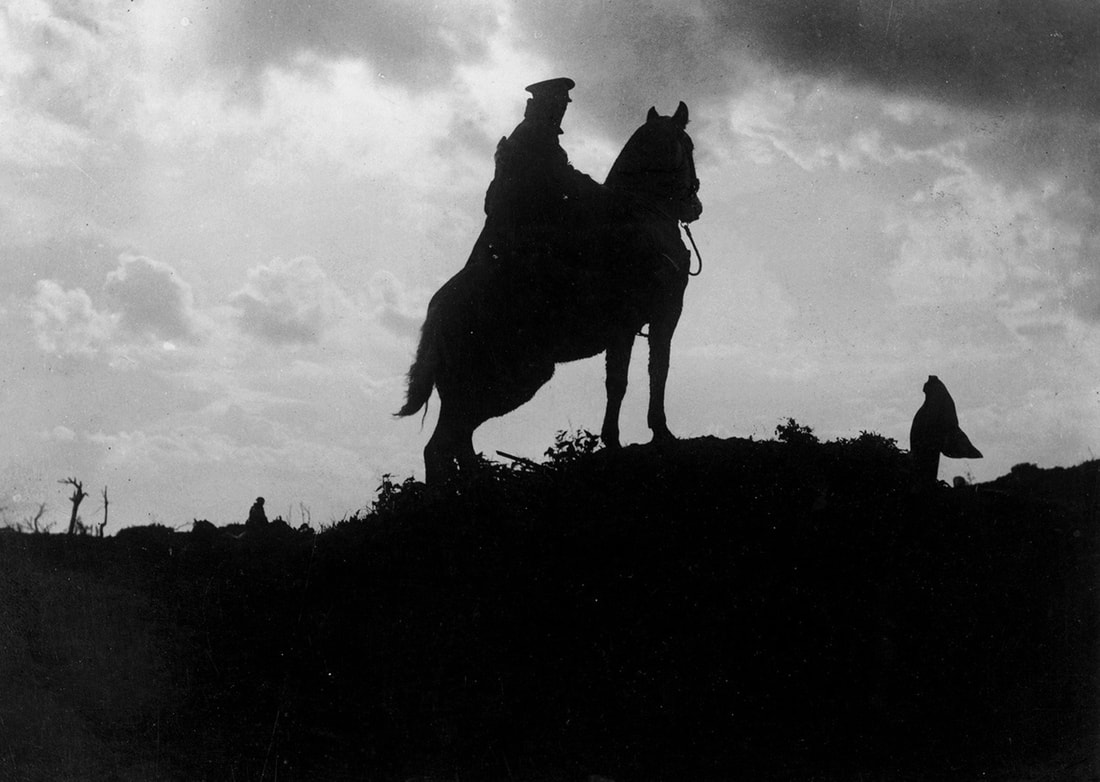 Riders: Motorcycle and Horseback: While Runners were very important to the war effort there were other means of communication that also did their part to help the Canadians succeed in battle. An alternative method of communicating were Riders. These were soldiers that were mounted on Horseback or Motorcycle. Horseback riders were more common in early wars because of their flexible availability. Riders rode across deadly terrain to deliver important messages to their officers. Similarly with Runners the Riders had to memorize deadly terrain and navigate swiftly to complete their missions. Commonly enough Riders were often targeted by enemy soldiers, and the Rider had to think quickly to make sure him and his horse would survive while being targeted and to deliver the critical information on time. 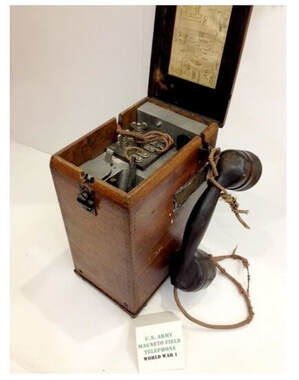 Moving onto a different type of Rider, these specific soldiers rode on motorcycles. When in tough times during the war and there were no more horses to help riders deliver messages, they used motorcycles to transport information from one camp to another. However, motorcycles were used more in the Second World War. As such they were still in their early stages and technical difficulties occurred constantly. The Riders had a difficult time being sneaky when using these vehicles, the element of surprise was lost, and enemy soldiers could easily spot them out because of all the noise the motorcycle created. Field telephones were widely used during the First World War. These devices used wire lines, occasionally commandeering civilian circuits when they were available. This new advancement in technology replaced previous methods of communication such as: flag signals and the telegraph. The telephone made communication almost instantaneous. There was no longer a need to worry about loss of life when delivering messages. However, there were new threats that effected all countries using these devices. The average telephone line only spanned 7 miles. So, each telephone could only be within that limit of each other to communicate. This prevented the soldiers from going far distances to deliver messages. When this occurred, it was easy for enemies to intercept and destroy lines of communication. For one day the average soldier repaired approximately 40 lines of telephone wire. Not only were lines destroyed by enemies they were also destroyed by the chaos of warfare. The field telephone was an exceptional advancement for military technology. However, there were some faults, it made communication a lot more efficient. Nevertheless, it was time consuming to set up and repair, but it proved its way into being one of the most efficient forms of communication in modern war.
To conclude, communication was a very important asset in any war. From running across the Mediterranean to sending men on horseback on the Italian front. Delivering messages is a key component to strategy and it must occur with great diligence and skill. One question I will leave here. What do you think is the most efficient form of communication? Read the 2 parts of this blog and send us a comment! In March of 1945, the war was rapidly drawing to a close. The German Siegfried Line had broken, and Allied troops were beginning the final leg of their liberation of Europe. The 8th Hussars, however, were given a different target. West of the Rhine lay the Netherlands, occupied still by German forces after years of war. The people were starving, weary of the brutality of their overlords. The 8th Hussars, along with other elements of the 1st Canadian Corps, were sent into the Kingdom of the Netherlands to cast off the German yoke. Their first task was to defend members of the 11th Brigade, who were clearing the line between Nijmegen and Arnhem. It was fairly quiet work, consisting mainly of patrolling the area to check on potential enemy positions. When they determined what locations the Wehrmacht used, they shelled them. A few skirmishes resulted from contact with enemy patrols, but there was little opposition in that region. As these patrols occurred, the rest of the regiment was preparing to move up. On the 12th of April, the Hussars were moving to the Ijsselmeer. The Canadians were tasked with seizing two bridgeheads in Arnhem and Apeldoorn. The Hussars themselves were actually sent into Germany, on their way to the Dutch town of Wehl. By the 14th, the British had taken Arnhem, and the Hussars entered the city. Amid its ruins, ravaged by the Germans during their departure, the Hussars received their orders. They, along with their sister regiments, were to clean out the 30-mile area between Arnhem and the Ijsselmeer in four days. It was, quite appropriately, named Operation Cleanser. The next day, the 8th Hussars were confounded by roadblocks as they drove to the Ijsselmeer. As they broke through them, they were fired upon by the enemy. The attack moved to the Arnhem airport, which provided no cover to the Hussars. In one of the most dramatic and daring movements the regiment ever performed, the 8th Hussars crossed the Arnhem airfield, surrounding every infantry-filled scout car with tanks, so that the German machine guns couldn't get a shot at them. The field was crossed, but not without casualties. Their progress through the Dutch countryside was by no means easy. Their lines were rugged and tanks were lost to the elements or the enemy. Still, the blitzkrieg of Operation Cleanser pressed on, and, by the second day, were near to the city of Barneveld, just seven miles from the Ijsselmeer. There, the Hussars witnessed firsthand the tragedy of the German occupation. Hundreds of Dutch civilians were starving, while the traitorous Dutch S.S. were harassing the Hussars from the shelter of a nearby wood. A whole regiment of artillery focused their fire on the forest where the enemy took cover, and incinerated all but seven of the 300 contained therein. The following day, the Canadians advanced to the town of Voorthuizen, from where they would move to take Putten and cut off the Germans in Holland from those in the eastern Netherlands. It was a turbulent day, but the 1st Division triumphed, with the town falling into Allied hands by evening. At the day's end, the 8th Hussars found themselves a mile from Putten and the sea. Behind them lay a trail of chaos extending back to Arnhem. Emboldened by their successes, the Colonel of the regiment ordered a night attack on Putten, the town where Operation Cleanser was to end. Putten was not to fall that night, however, as A Squadron rode into the town, they were ambushed by German troops and driven back. Their will unbroken, they regrouped, and, at 9 o' clock the next morning, the 8th Hussars took the town. After five years of Nazi oppression, the people of Putten rejoiced, taking to the streets and throwing their arms around their liberators. Not long after taking Putten and closing the Allied line to the Ijsselmeer, the 8th Hussars were sent off again with the 5th Division to partake in one last great battle. In the northernmost part of Holland there lay the port of Delfzijl, a German stronghold boasting impressive fortifications and a garrison of 3000 men. By April 24th, the Regiment found themselves supporting four battalions of infantry surrounding the city, a struggle that lasted for eight days. Attack after attack moved through the sodden spring fields of Holland, waves of infantry followed by the great steel tanks of the Hussars. Each time the Germans would advance in counter-attack, and each time they were dispatched at point-blank range by the Canadians. Many tanks were lost in the muck, but still the advance continued, capturing guns and men, and seizing metre after metre of occupied territory. As the victorious hand of the Allied armies closed slowly around Nazi Germany, so too did the 5th Division, 8th Hussars included, close around the port of Delfzijl. Eventually, after eight days of blood and mud, the garrison of Delfzijl surrendered, marching out of the city in hundreds, and into the waiting arms of the 5th Division. The war ended days later, and the people of the Netherlands rejoiced in their newfound freedom. In the village of Eelde, the Regiment was presented with a parchment and gold medal from the mayor and council of the municipality commending them for their role in liberating the town. The people of Eelde still honour the 8th Hussars to this day by raising our town flag on May 5th, the anniversary of the day they were liberated. Thousands of miles across the sea, Sussex raises theirs.
Operation Diadem was the codename used to denote the Battle of the Liri Valley. This battle took place from 11 May to 4 June 1944 in western Italy. If Allied Forces could break through in the Liri Valley, it would be a straight shot onto Rome. However, the campaign would not be easy. Using the mountainous terrain, the Germans had created a series of defensive lines that cut across the Italian landscape. Allied Forces would have to knock the Germans from their defensive perches in order to march on Rome. A night assault was launched against the first hurdle in the Liri Valley, the Gustav Line. Allied Forces breached the line and eventually broke it, forcing the Germans to retreat to the Hitler Line on 17/18 May. Following this, preparation began for the assault on the Hitler Line. The 5th Armoured Regiment (8th Princess Louise’s New Brunswick Hussars) would be moved to the front to take part in the Liri Valley campaign from 18 to 30 May. The Regiment began moving on the 18th, it would take several days for the Hussars to reach their destination. Traffic congestion kept the roads clogged; the Regiment would finally reach their preliminary staging ground on the 20th. Orders came down the next day, Allied Forces were to assault the Hitler Line on the 23rd. On the 22nd, the Hussars were given their regimental orders. Operation Chesterfield would see the Hussars and their attached infantry regiments form a beachhead across the Melfa River, after Allied Forces had cleaved the Hitler Line. From there, the Regiment was to exploit towards Ceprano.
However, in order to get to the Melfa, and Ceprano beyond, a hole had to be punched in the Hitler Line. This line served as the defensive fallback for the Germans retreating from the Gustav Line. The 1st Canadian Infantry Division and 5th Canadian Armoured Division, as part of the British 8th Army, drove a wedge into this line on 24 May. After extensive fighting, this wedge was widened into a breach. The Hussars were hurled into this breach. In the breach, the men found chaos. The Germans were retreating before the advance of the Canadians. However, their retreat was sporadic. The Hussars encountered clusters of infantry and anti-tanks guns. Some of the Germans ran, others surrendered, and those that did neither were engaged and eliminated. After a series of these encounters, the Hussars had made their way to an assembly point just before the Melfa. They would spend the night there, after silencing some German artillery. On the morning of the 25th, the regiment began their crossing to provide support to the infantry on the other side. To get there, the regiment had to take their tanks up a donkey path that had been widened by the engineers. At the top, the tanks of C Squadron encountered some stiff resistance, but after several minutes of heavy fighting, this immediate resistance was cleared. However, the regiment would experience consistent mortar strikes throughout the night of the 25th. With the Hitler Line penetrated, the Germans began their fighting retreat. In the process they provided no fixed front, and so the battle became fluid. The enemy was engaged where he could be found: in houses, clusters of trees, and the villages. For the Hussars, the town of Ceprano was the next target. This small town on the Liri River was a key strategic target as it was at a crossroads heading out of the Valley. Taking this town would hamper the German effort to withdraw their forces from the Hitler Line. When the infantry finally entered Ceprano, all they found was a deserted town, the Germans had already withdrawn. Unfortunately, the Hussars were stuck on the other side of the Liri River as there was no bridge to get across. So, the Hussars waited; it would be the 28th before the engineers were brought forward to put up a bridge. However, once on the other side, the advance slowed considerably. The dense foliage prevented the easy movement of tanks and material to continue the advance. Eventually, the terrain made the Sherman tanks ineffectual. Command gave the word on the 30th, the Hussars were to halt the advance their part in the Battle of the Liri Valley Their role was finished. With the Hitler Line smashed, Allied Forces weaved their way through the Liri Valley and unto the Italian prize, Rome. The laurels would go to the Americans who, under the command of General Clark, entered a Rome empty of Germans on 4 June 1944, ending the Battle of the Liri Valley. Following the capture of Montecchio, the Allies were poised to consolidate their gains and pierce further through the Gothic Line. The Cape Breton Highlanders led the way, capturing Monte Marrone on the night of 31 August, 1944. With the path clear, the 8th New Brunswick Hussars could move their tanks up the hill and dig in. From their imposing position, they were just over a kilometer away from the twin peaks of Monte Luro and Point 253. Situated on a spur on Point 253 lay the town of Tomba de Pesaro, the next objective awaiting the Canadians. A barrage of 75mm shell fire from Hussar M4 Sherman tanks signalled the start of the battle. The Axis defenders furiously returned fire, immediately knocking out Lieutenant Bill Spencer’s tank. Lorne Fraser and Harper were subsequently killed. Other tanks fared better, with enemy armour-piercing shells bouncing off their turrets. Around 12:00 noon, under heavy anti-tank and mortar fire, Major Howard Keirstead ordered No. 2 troop to move about a kilometer and a half to the left of the main force and mount a flanking maneuver. Once No. 2 troop arrived, they surveyed Tomba de Pesaro through binoculars, identifying targets and potential enemy positions. Marked targets were then blasted with 75mm shells and machine-gun fire. Enemy anti-tank crews reacted quickly and returned fire, although they were swiftly knocked out after giving away their position. Nevertheless, several enemy high-explosive shells hit their mark, and damaged the gun on one of the Hussar tanks. The firing continued and ammo began to run low. One of the tanks risked moving up the crest of the hill and opened up on several houses with machine-gun fire. White flags were waved and surrendering Italian troops emerged from the houses. However, the fighting was far from over and stubborn enemy resistance remained firmly entrenched in the town. By the afternoon, Point 253 had fallen to the combined attack of the Irish Regiment and C Squadron from the 8th Hussars. The stage was set to move into the town of Tomba de Pesaro. While staging for the main attack, the tanks came upon several hidden concentrations of German infantry. They proved no match for the heavy Canadian armour, and some seventy soon surrendered. The tanks began moving up the ridge towards the town, with infantry from the Irish Regiment riding atop the tanks. Advancing uphill along rocky terrain was difficult, and several tanks lost their tracks. Around 1800 hours, the main attack on the town began, with the tanks providing heavy covering fire as they advanced. The Germans never fired back however. Sensing an opportunity, the infantry dismounted and entered the town. Rather than encountering resistance, they found the Germans had abandoned the town and fell back. In celebration, the infantry hung a banner that read, “Bobby Clark-ville – In Bounds to All Canadian Troops”, in honour of the Commanding Officer of the Irish Regiment. Lieutenant-Colonel Clark himself had nothing but accolades for Cliff McEwen and the 8th Hussars. As a token of appreciation, he handed McEwan a gallon of rum. Thanks to the combined efforts of the 8th New Brunswick Hussars and the Irish Regiment of Canada, Tomba de Pesaro was now firmly in the hands of Allied forces. The Gothic Line had been definitively breached, and the Germans were once again forced to fall back. Slowly but surely, the Italian campaign was reaching its conclusion.
To find out more, visit the 8th Hussars Museum, 66 Broad Street, Unit 3, Sussex, New Brunswick. 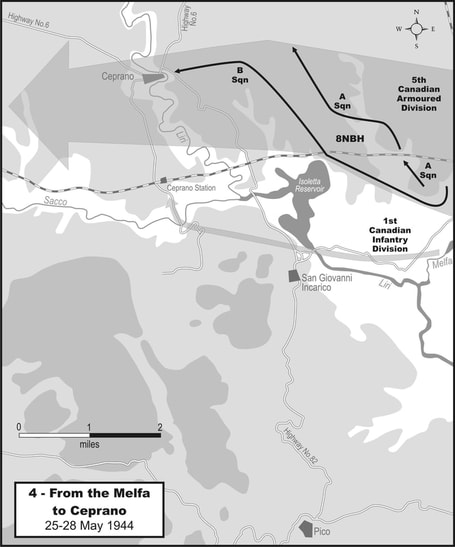 The Battle of Liri Valley was an Allied Operation that, if successful, would give the Allies a direct corridor unto Rome. In order to gain access to the main highway to Rome, the Melfa River had to be forded. The Canadians from the Westminster Regiment and Lord Strathcona’s Horse would be the first units across. The Westminster’s would cross in the early morning hours of the 24th of May 1944. They established, and held, a beachhead against stiff German resistance until they were reinforced. The 5th Armoured Regiment (8th Princess Louise New Brunswick Hussars) would be ordered forward to the Melfa Crossing to help enlarge the beachhead on the other side. At 0800 hours on the 24th, the Regiment began their move. However, due to traffic, the regiment would not be at their muster-point until 1100 hours. German artillery fire began raining down on the tanks as they moved, but the shellfire could not penetrate the Shermans. From there, the regiment would be on the move again at 1500 hours. It would be during this move that the Hussars would see their first action of the Melfa Crossing. The Germans had begun pulling back, and command wanted them stopped. So, the regiment swung to cut across the German withdrawal and the Reconnaissance tanks were sent out to sweep the area. Unexpectedly, German infantry began firing at these lead tanks. A Squadron was sent in to assist in clearing this resistance. During this brief engagement, two Sherman tanks became stuck after attempting to make their way through a gulley. In the same Gulley, the Hussars found a German Panther. From where they were stuck, none of the tanks could fire on the other. Some small-arms fire was exchanged and a German killed. The rest surrendered. Ultimately, the action on the 24th would be short lived and sporadic. The German withdrawal meant that there were no defined enemy positions, instead the regiment engaged pockets of infantry and the occasional Panther as they stumbled upon them. As the day closed on the 24th, the regiment was redirected back to the Melfa Crossing. Enemy tanks had been sighted by the Canadian infantry, and the Hussars were needed to stave off a possible attack. As darkness fell, the regiment settled down to get what sleep they could, all the while the shellfire rained down on them. 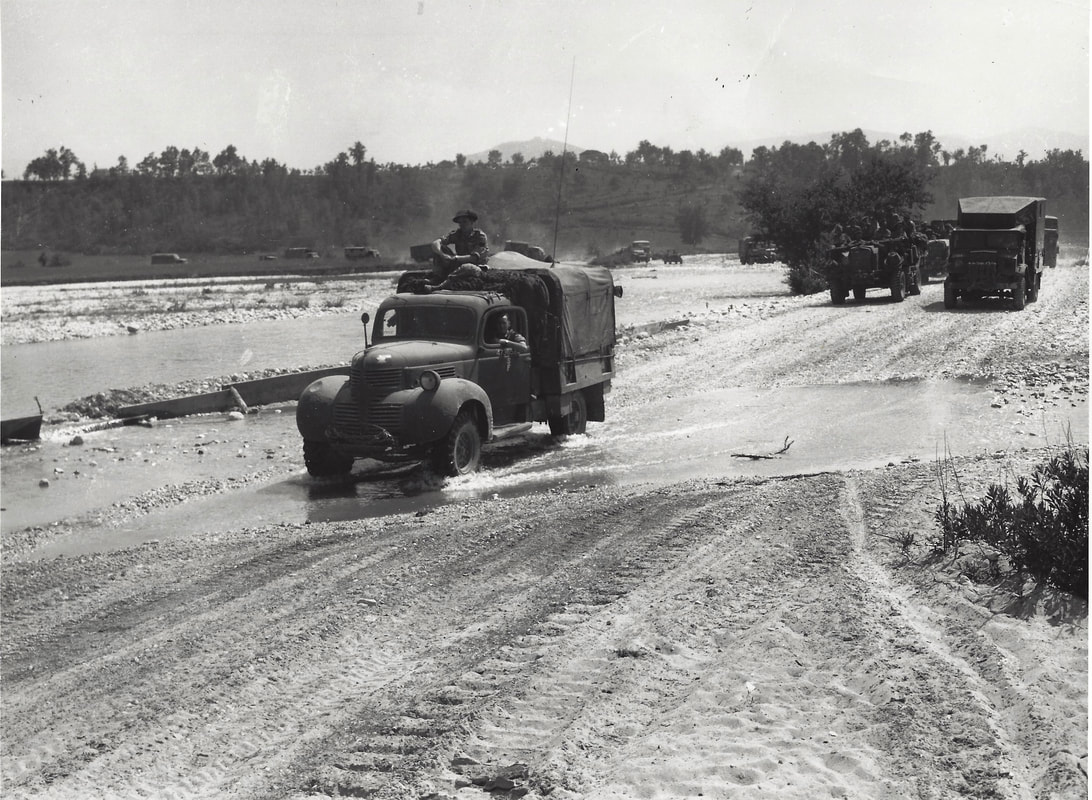 The regiment would be resupplied on the morning of the 25th. From there, the Hussars moved to their new muster-point. At 1500 hours, the regiment would begin crossing the Melfa River. A donkey trail had been widened by the engineers to allow the tanks passage to the top of the bank on the other side. It was a nerve-wracking climb. At one point, a terrified young driver abandoned an anti-tank gun he was towing to the beachhead. The driver had completely blocked the trail and had stalled the regiment’s advance. Lieutenant-Colonel Robinson ran from his tank and cajoled him into continuing the advance. On the other side of the river, the regiment linked up with the Cape Bretons and took over the advance. The beachhead had to be expanded. In setting out to accomplish that task, the Hussars would drive into the teeth of a German ambush. Shortly after 1700 hours, a withering German fire would be hurled at the Hussars. The anti-tank fire came at them with unparalleled ferocity. The volume of fire was such that the gunners were practically blind. There was no where to go but forward, so the Hussars charged blindly ahead their guns firing at random. In desperation, the gunners keep firing, wherever it was suspected that a German gun might lie, a shell was fired off. Three tanks had been destroyed by the Germans, some going up in flames. Another, that belonging to Major Lane, was targeted for destruction. The Germans managed to knock it out of commission, in the process seriously wounding the Major and his crew. The Hussars kept pressing on, as one tank was knocked out, another would come to fill its place. In this manner, the regiment made it nearer to the German positions. With the threat posed by the closing Shermans, the Germans began their withdrawal. By this time, the other squadrons of the regiment had made it up from the Melfa Crossing. The Hussars had eliminated several 75mm guns and a self-propelled anti-tank gun. This brief conflict lasted only a quarter of an hour. With the Germans driven back in the immediate area, the day’s action for the Hussars would end. The Hussars tried to get what sleep they could amidst the German shelling, for tomorrow the fight would go on. Despite earning its reputation as a nascent military power on the battlefields of Europe, the Canadian armed forces fell into precipitous decline following the end of the First World War. After the November 11th Armistice and the subsequent signing of the Treaty of Versailles, much of the then large and battle-hardened Canadian Army was demobilized. By 1920, Camp Sussex, which had trained units of the Canadian Expeditionary Force headed overseas, was a shadow of its former glory. Appalled by the state of affairs, Lieutenant-Colonel Alfred Markham made the decision to whip the most important fixtures of the Camp back into shape. The government eventually provided some funds, but most of the repairs came out of the Regiment’s coffers. The repairs were a success, and by 1921, the Regiment was back to holding summer militia training camps, albeit on a much smaller scale than before. However, cutbacks had taken their toll. The first summer, 21 officers, 88 men, and 78 horses mustered for training. The number of men who showed up for training dwindled the following year, and by 1923, each horse was shared by two men. Meanwhile, federal money had dried up, and the Hussars frequently turned men away because they could not afford them. Consequently, training focused on building up a nucleus of key men to form the backbone of the Regiment in the event of war. By the late 1920s, there was growing realization that the era of sword and saddle was coming to a close. Mechanization, as it was understood, was the wave of the future. Many cavalrymen, however, were skeptical of these trends and continued to do whatever they could to maintain the relevancy of cavalry. The 1930s proved even more challenging for the 8th Hussars, and the Canadian Militia as a whole. The Great Depression, the most calamitous economic downturn known to industrial society, began in 1929. Amid growing unemployment and shrinking government revenue, the Hussars came under growing financial strain. In 1931, the Regiment was informed it would be allocated a mere $675 for training, the lowest amount ever. Later, the financial situation deteriorated further, and Ottawa informed the Regiment there would be no funds for summer training and only a small amount for evening drill. As a result, much of the training had to be conducted on a voluntary basis, out of the pockets of the Regiment’s officers. Nevertheless, the men made the best of it. A.T. Ganong took personal responsibility for the success of the Regiment, and his leadership was instrumental in its survival through this period. His successor, Lieutenant-Colonel Keltie Kennedy became the inheritor of this legacy and became, in the words of the historian Douglas How, “one of the stoutest champions the Regiment has ever had.” Colonel Kennedy’s leadership inspired the men to go above and beyond, and his steady hand was instrumental in keeping up morale during this difficult period When Kennedy was still a Major, he suggested to a high-ranking officer at dinner that the 8th Hussars machine-gun troop would like to attend the central marching-gun camp at Valcartier, Quebec. The senior officer scoffed at the idea, highlighting the unfairness of sending mere militiamen into competition with specialist machine-gun units. Major Kennedy responded by saying that if the troop performed poorly, he would pay for its trip out of pocket. The Hampton troop went to Valcartier in the summer of 1935 and bested every other unit there. In many respects, the performance of the 8th Hussars machine-gun troop reflected the essence of the era. Short on cash and manpower, the Hussars did what the could with what they had, in many cases with astounding results. With another world war around the corner, this training proved invaluable as Canada once again rebuilt its army To find out more about the 8th Hussars and the interwar period, visit the 8th Hussars Museum, 66 Broad Street, Unit 3, Sussex, New Brunswick.
The Canadians had been in Italy for a year when they liberated Ravenna. It was December 4th, 1944. The Fifth Division is still celebrated today for its bravery in freeing the ancient city. As their actions in Ravenna succeeded, however, another failed. The First Division participated in a hastily-organised attack across the Lamone River, which was repelled by the Germans and forced a Canadian retreat. Together, the Royal Canadian Regiment and the Hastings and Prince Edward Regiment suffered close to 200 casualties, some of which were inflicted by their own artillery as they clung to the riverbank. Despite this setback, command began the organization of a second offensive across the Lamone, a week from the failure of the first. Nothing was spared in preparing for this attack. Both Canadian divisions, the 1st and 5th, were to attack simultaneously, while a British brigade would conduct a feint attack nearby. The Desert Air Force would support the ground attack by bombing enemy positions on the other side of the river. The attack went of the night of December 10th, 1944. Several infantry divisions used boats and inflatable bridges to cross the river, swelled 60 feet across by Italy’s winter rains. The 48th Cape Breton Highlanders, Carleton and Yorks and West Nova Scotians all crossed that night. Engineers erected bridgeheads across the river. The enemy had been disorganized by the tanks of the 12th Royal Tank Regiment of Britain, and hadn’t recovered when the initial assault began. The advance was swift and effective. By two in the morning, the Canadians had captured several towns on the north bank of the Lamone, and taken over a hundred prisoners. The Desert Air Force was doing its job well, performing 312 sorties on December 11th alone. It was on the eleventh that the Germans regrouped and counterattacked in two places, hoping to regain some of their lost ground. The attacks were held off by the Westminster Motor Regiment, who would later distinguish themselves beside the 8th Hussars during the liberation of the Netherlands. The Allies held their ground, while the engineers completed the bridgeheads. By the twelfth, the rest of the Allied troops were ready to cross. All this time, the 8th Hussars had been making their way north from Cervia to Ravenna, their mood sour. Their long-time commander, Lt.-Col. G. W. Robinson, had been promoted out of the regiment and sent to Holland to command the 2nd Armoured Brigade. In addition to the loss of a dear leader, the 8th Hussars were to act as infantry when they arrived in Ravenna. Major Bob Ross, the acting commander of the regiment, had haggled with the brass and persuaded them to allow C Squadron to keep their tanks. The other two squadrons, however, were left high and dry, and were drilled as infantry on arriving in Ravenna. There they remained, from the ninth of December to the 12th, when they were told to attack the town of Mezzano, eight miles north of Ravenna on the Lamone. They crossed the river early on the 12th, the new infantry of A and B Squadrons clinging to the tanks of C. Their point of crossing was a Villanova, from where they moved northeast up the Via Aguta. The 8th Hussars would attack Mezzano from the north. Ultimately, however, Mezzano proved empty. There were no Germans for them to fight in the town itself. Actual contact with the enemy was brief, and occurred just east of town. Major Ross moved the regiment along, taking occasional fire from snipers and machine guns. 8th Hussar patrols pushed 2000 yards to the Naviglio canal, allowing for the engineers to their rear to finish constructing a bridge over the Lamone that would allow the rest of the army to cross. Only one man was wounded: during a skirmish, Sergeant Patterson of Recce Troop was shot by a sniper. Altogether, the 8th Hussars killed about 80 enemy soldiers that day. It was later that night, at about 11 o’ clock, that the Germans retaliated. To the left of the Regiment’s position, the 12th Brigade of infantry had begun an attack across the Naviglio canal. Shells soared across the plain, crashing into the fertile Lombard ground around where the 8th Hussars were halted. Machine gun fire shattered the stillness of the Italian night. In response, the Regiment dug in, just as any infantry regiment would have, and defended themselves. The Navoglio offensive would eventually succeed, but not without cost. The Princess Louise Dragoons lost 21 men to death and another 46 to capture. The Lanark and Renfrews were holed up in a house across the Naviglio for two days, losing 38 men in the process. The Hussars position remained on the near side of the Naviglio until the 15th.
Eventually, their new colonel arrived, relieving Major Ross of his temporary command. On the 15th, the Regiment was told they could stop playing infantry and have their tanks back. It was a joyous occasion for every 8th Hussar on the field. After the Lamone experiment in infantry, Princess Louise’s Regiment was home, insofar as they were armoured again. The 16th was spent with their vehicles, checking them over and preparing them to ride into the bloody, unknown future of the Italian Campaign. During the autumn of 1944, the 8th Hussars took part in a great Allied offensive intended to break the Gothic Line; a 200-mile long, 10-mile deep wall of German artillery and fortifications. Stretching from the port of La Spezia on the Tyrrhenian Sea to the city of Pesaro on Italy’s eastern shore, the Gothic Line provided a near-impenetrable barrier to the heartland of the Italian Social Republic, the Nazi puppet state that played host to all the German troops in Italy. If the Allies were to liberate Italy, the Gothic Line had to fall. After a long summer spent training and relaxing in the Roman countryside, the 8th Hussars mounted their tanks for another campaign. They travelled north, battling their way through the Apennine Mountains, skirting German defenses as they went. As August faded and the first traces of autumn were felt, the Canadians came to the narrow plain that separated the mountains from the Adriatic Sea. Between them and their destination of Rimini lay 40 kilometers of alternating valleys and ridges, bristling with the strength of the German 10th Army. The 8th Hussars, as part of the 5th Division, were a part of the initial force tasked with breaching the Gothic Line and pushing to Rimini, a contrast to their role in the battle of Monte Cassino, where they had played a supporting part in the action. The first action they saw on the Gothic Line was the battle at Montecchio, in which the Cape Breton Highlanders attacked three times before withdrawing. Eventually, the Hussars came to their assistance, and they captured the village, taking 130 prisoners. At the same time, A Squadron defended Point 111 a short distance away. The villages of Monte Luro, Monte Marrone, and Tomba di Pesaro fell shortly afterwards to the advancing Canadians. On September 3rd, 1944, the Canadian forces arrived at Misano, a small village perched atop a ridge, and one of many anchors of the Gothic Line. The Royal Canadian Regiment and the Westminster Regiment led the charge, with the 8th Hussars providing armoured support to the infantry units. There was no major battle at Misano Ridge. Instead, the next four days would prove to be a series of confused skirmishes between the attacking Canadians and the Germans, now on the defensive. A Lieutenant Burns of the RCR would bravely lead a bayonet charge against the enemy, driving them from the town square. The 48th Highlanders advanced to attack, but were forced to retreat when heavy enemy fire pinned them down. The 8th Hussars attacked the hamlet of Besanigo, a hamlet on the seaward slope of Misano Ridge, early on the 4th of September. Mortars held them up, with "B" Squadron pinned on the ridge for most of the day, as "A" Squadron tried futilely to help. They fired smoke shells at enemy guns on neighbouring Coriano Ridge, but the enemy were not fazed, and the Hussars did not capture Besanigo. The 8th Hussars lost six tanks that day, but one Hussar received the Regiment's first Distinguished Conduct Medal during the battle. Sgt. W. P. Fleck dismounted his tank when daylight was running out and making it hard for crew commanders to see anything. Fleck led his tanks to their objective, killing five Germans with a machine-carbine and capturing eight more. He was wounded by shrapnel, but continued on with his injury until he passed out from loss of blood. The following morning, the Cape Breton Highlanders and the Irish Regiment of Canada were able to capture Besagino. Two days previous, the Hastings and Prince Edward companies captured the village of Santa Maria di Scacciano from the enemy. By the end of the fifth, all of Misano Ridge was under Canadian control. The battle for the Gothic Line, however, was just getting started. A ridge over, at Coriano, the Germans began a vicious mortar and shelling campaign, a resistance unanticipated by the Allies, but calculated and executed coldly and precisely by the defending Nazis. Just as the first skirmishes were beginning to pay off, the advance to Rimini was abruptly halted.
For the next ten days, the Canadians fought for every scrap of land they could hold. The center of that struggle, a simple, idyllic hilltop village, was to be the sight of one of the most destructive and hard-fought battles in the 8th Hussars' entire career as a regiment. In the end, Misano was a warm-up, paling in comparison to the utter, indiscriminate destruction of Coriano Ridge. The decades following the end of the First World War would see Camp Sussex decline as an epicentre of military training in the province. Several of the local militias, like the 8th Hussars and New Brunswick Rangers, would still assemble at the Camp for annual training. Beyond this, the Camp would be relegated to secondary importance, especially as the Great Depression began ravaging the country. With the government tightening the strings on the treasury, funding for the militia would become scarce. Austerity would become the only policy available to many militia’s and their training centres. However, prior to the onset of the depression, many militia regiments managed to make good use of the Camp. The 8th Hussars Officer’s Bungalow, constructed in 1904 and renovated following the First World War, would become a focal point of community activity in Sussex. 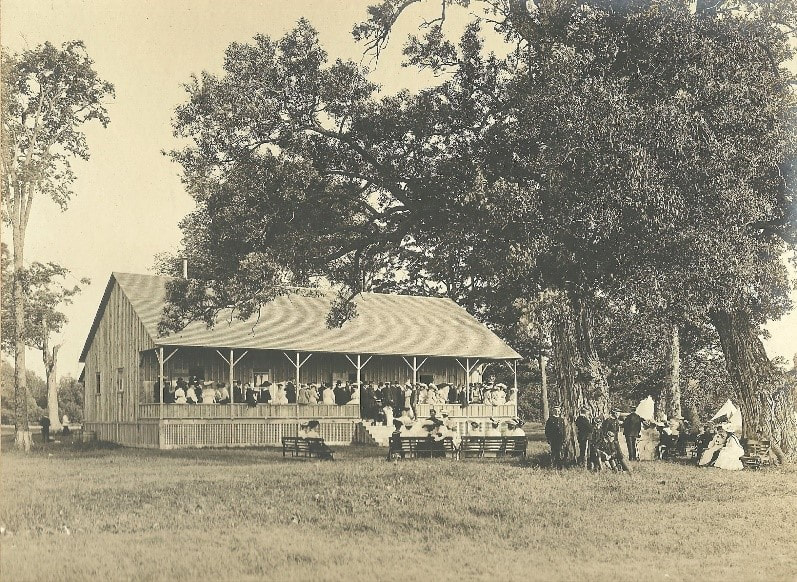 Situated in Camp Sussex, this building would welcome visitors from the Town of Sussex and officers from other militias, in the process becoming famous for its hospitality. Besides this, a new militia, the 7th Machine Gun Battalion was formed, and did much of their training, in Camp Sussex following the First World War. As one last hurrah before the onset of depression, Canada-wide Merit Cup Competition, an annual cavalry competition, was held in Camp Sussex in 1930. But, with the onset of the Great Depression, funding for the militia would be curtailed. Pay cuts, fewer days training, and for many voluntary training became the norm during the depression years. However, as the country began moving out of the depression, Camp Sussex would go on to retake its place as the pre-eminent military training centre in Atlantic Canada. As the situation in Europe began to deteriorate in the late 1930s, the militia began to prepare. For the Hussars, this meant new methods of training. The First World War had shown that the use of cavalry in modern war was untenable. So, the Hussars began to mechanize. With some confiscated Model T-4s, the regiment would practice maneuvers in the fields of Camp Sussex. 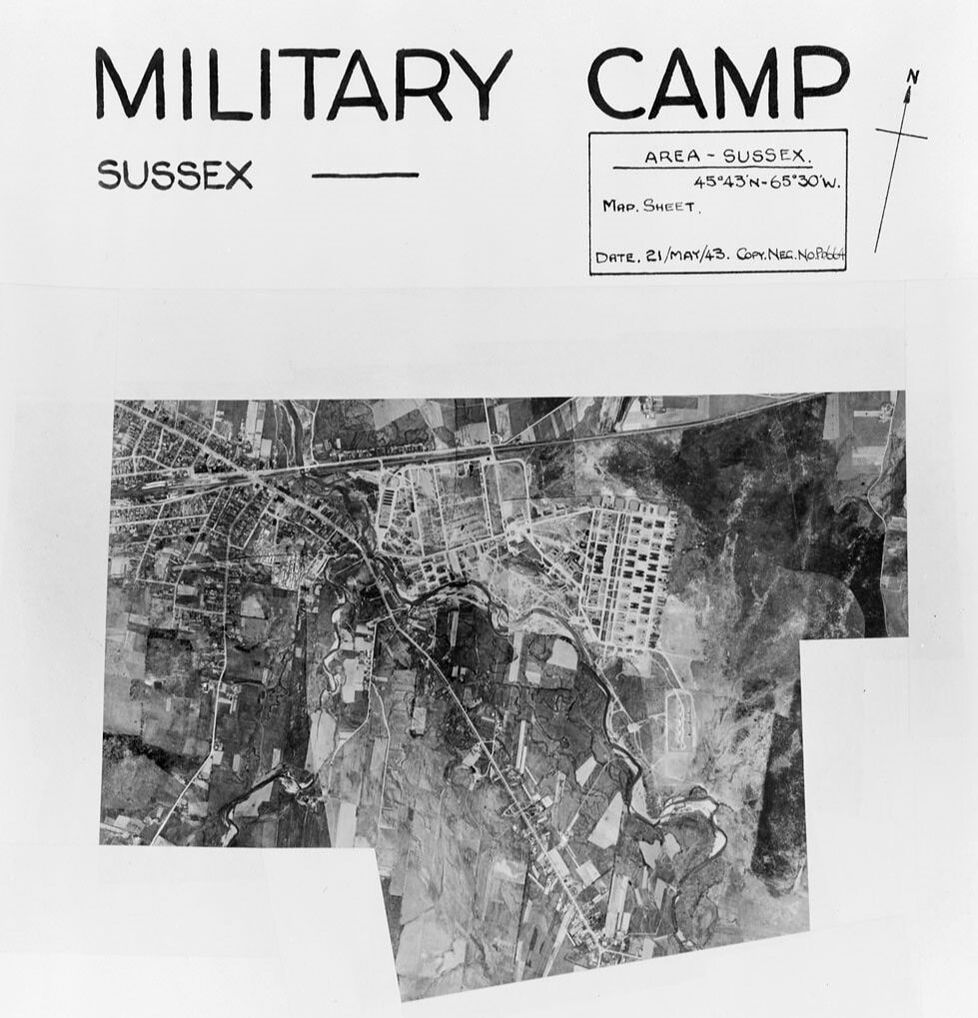 The outbreak of the Second World War would be the catalyst that would reinvigorate the Camp. In the early years of the war, a massive building programme was undertaken. There were not enough beds to house all the soldiers that were being sent to the Camp for training. From 1940-1941, the Camp was expanded to house approximately 10 000 men at a time. To accomplish this, H-hut barracks were constructed on the grounds, covering a significant portion of the Camp. Canteens, officers’ quarters, administrative buildings, latrines, hospital, all the infrastructure that the Camp needed was smashed onto the grounds. Yet, so great was the influx of men, the bell tents still had to be used to quarter some of the men. During the early years of the war, 3rd Canadian Infantry Division, the 4th Canadian Armoured Division, and elements of the 7th Canadian Infantry Division would be trained in Camp Sussex. Each division comprised approximately 10 000 men. The 3rd and 4th were overseas combat divisions, the 7th was a home division. Training included learning to operate heavy weapons like the 2 inch and 3 inch mortars at the McGregor Brook Range, rifle and machine gun practice, amphibious assaults, map reading, administrative tasks, and many other skills essential for combat.  As the war progressed, the A34 Special Officer’s Training Centre was established at Camp Sussex. It was under the command of Brigadier Milton Gregg, a recipient of the Victoria Cross in the First World War. The British Army had experienced a high rate of casualties among their junior officers. As such, the A34 training centre would train the CANLOAN officers; these officers volunteered to be loaned to the British Army. Approximately 650 officers would be sent to Camp Sussex to be trained under Brigadier Gregg before being shipped to British Regiments. The close of the Second World War would ring the death-knell for Camp Sussex. As the Canadian Army was repatriated home, the operation of the Camp came under government scrutiny. Size was a problem; the Camp simply did not have enough room to accommodate both the soldiers and the land needed for training. So, an old idea was revived, Gagetown New Brunswick would be selected as the new Canadian Forces Base for New Brunswick. In the meantime, Camp Sussex would still be used. The 8th Hussars had 6 Sherman tanks located at the Camp, they trained with these until they were removed by the government in the late 1950s. . For a while, the Black Watch was headquartered in the Camp following the end of the War. When CFB Gagetown opened in 1958, military training began to be concentrated there. For Camp Sussex, this saw much of its infrastructure taken away. Some of the H-huts were towed across Trout Creek and converted into residential complexes. One training hall became the York Arena in Fredericton, another became the Kings County Stadium. The Gas Hut were taken to Peter Street and made into a home. The tank hanger now houses the Agricultural Museum. Finally, the land itself was sold to the Town of Sussex in the early 1970s. The Gregg Armouries on Leonard Drive, which houses B Squadron of the 8th Canadian Hussars, is the only military connection to what was the premier training base in Atlantic Canada. And so, after 100 years of military service, thus ended Camp Sussex. The Battle of Montecchio 30-31 August 1944 By Matthew GambleBy early summer, 1944, Axis forces in Italy were on the backfoot. Allied breakthroughs at Anzio and Cassino meant that German forces were at risk of being surrounded and cut-off. However, disagreements between British and American commanders over who would be first to liberate Rome gave German forces time to retreat to the Gothic Line and consolidate their defences. As a result, a new line of dangerous fortifications needed to be breached by the allies. The 8th New Brunswick Hussars were to play a role in this operation. On the 29th of August, 1944, the Regiment moved into position in the hills south of the picturesque town of Foglia. Their objective: cross the valley below and occupy the high ground before occupying the town of Montecchio. The Germans had other plans, and elements of the German 10th Army were hastily digging-in in preparation for the inevitable Canadian offensive. A formidable 14-foot anti-tank ditch was dug, and machine-guns and anti-tank guns were positioned on the high ground with interlocking fields of fire. Montecchio lay surrounded by these formidable defences. It would not be an easy fight. In the battle to come, B Squadron, with infantry support provided by the Cape Breton Highlanders, was to take Point 120, a prominent knoll to the west of the town. Meanwhile, A Squadron, with infantry support provided by the Perth Regiment, was to take Point 111, the edge of a long ridge in the area. Finally, C Squadron, supported by the Irish Regiment of Canada, was to take the high ground surrounding Tomba di Pesaro. The attack began at 1730 hours on the night of the 30th, and was met by feeble German resistance. The Canadians had caught the Germans off-guard as they hurriedly tried to man their positions. Seizing the opportunity, Major Howard Keirstead and his tank advanced down the valley to join the Cape Bretons. This time, the Germans were prepared, and the Major’s tank faced a wall of enemy fire. Captain Bob McLeod and his tanks were eager to join the battle, but were held up in a traffic jam by a Provost. McLeod continued by motorcycle under fire in a bid to find Keirstead, who ordered the tanks moved up. With the tanks still being held up by the Provost, McLeod made a call to Colonel Somerville, seeking permission to get his tanks moving again. The Cape Bretons encountered fierce German resistance at Point 120. Despite tank support from the Hussars, the enemy was not to be dislodged. Nevertheless, A Squadron, under the command of Frenchy Blanchet, found more success at Point 111. Artillery fire proved very effective at neutralizing German gun emplacements, and the hill was taken without heavy casualties. The next day brought the inevitable German counterattack. The line held, and the Regiment consolidated its gains, with Cliff McEwen and C Squadron reinforcing Point 111. From the high ground, they pounded enemy positions in and around Montecchio. The fire was effective, and the Irish Regiment easily mopped up remaining German resistance. Outflanked, the Germans defending Point 120 quickly fell soon after. Lacking infantry support, A Squadron encountered much heavier resistance as they attempted to take the high ground at Point 136. Ten Hussar tanks were knocked out by enemy fire, and the attack was blunted. Major Blanchet and his tanks were forced to fall back into a defensive position until infantry support arrived. After linking up with the Perths, the Hussars were finally able to take Point 136 from its exhausted defenders.
From their newly-conquered commanding positions above the valley, the Hussars took stock of the cost of their conquest. Burnt out tanks littered the valley, and the Regiment spent the next several hours digging graves. The grim cost of war. Fighting in and around Montecchio was just a taste of what was to come in later battles, as the Allies breached the formidable defences of the Gothic Line. To find out more about this story, and the 8th Hussars in the Italian campaign, visit the 8th Hussars Museum on 66 Broad Street, in the historic Sussex Train Station. 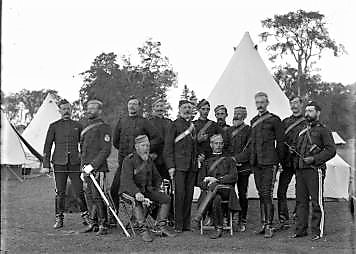 Camp Sussex was the largest Military Base in Atlantic Canada. It was officially opened in 1893. However, the land had been used for training by local militias as early as the 1870s. For example, the 8th Princess Louise's New Brunswick Regiment of Cavalry trained on the grounds in 1885; there were so many men in attendance that the band was brought in for the duration of the Regiment’s time in Camp. In addition to this, the regiment would parade at the future camp in 1889. As the decades passed, Camp Sussex would become the premier military training installation of the Maritimes until it was eclipsed, and eventually shut down in the 1970s, by the opening of CFB Gagetown. The area chosen by the Dominion Government in 1893 for the Militia Camp was located near the heart of the Town of Sussex. The Camp Ground’s terrain consisted of field, forest, and stream. The terrain would be suitable for cavalry, infantry, and artillery. The most prominent cavalry regiment at Camp Sussex were the 8th Hussars. The 74th Battalion trained at the camp every year until the regiment was disbanded following the Second World War. The Newcastle and Woodstock artillery regiments frequented Camp Sussex numerous times. However, training in these early decades would be performed mostly in the summer and fall months as the camp had no permanent buildings. For the cavalry, this allowed them to perform drills in the dry summer months, which helped prevent injury to horse and rider. For the men attending camp, they would make use of the Bell tent, with 10 men assigned per tent. Eventually, these tents would be mounted on a wooden base to keep the men and their equipment off the damp ground. The first permanent structure that came to Camp Sussex was the Armoury. It was built in 1904 by the Dominion Government. The Armoury would be assigned to the 74th Battalion and the 8th Hussars to use for storage and supplies. This building would remain in service until after the Second World War. In the years leading up to the First World War, militia training would reach its zenith at Camp Sussex. This is despite the fact that a soldier’s pay was often negligible. For example, a soldier in the 74th Battalion could receive anywhere from 0.50 to 0.85 cents per day in 1907. The 8th Hussars used a comparable pay structure. However, the Hussars could receive an extra $1.50 as the Government would rent their horses. Notwithstanding the low wages, many militia regiments would train in Camp Sussex leading up to the First World War. Annual militia training was a key component of Dominion defense; as such, the militia regiments were mobilized annually to take part in 1 to 2 weeks of training in the summer. This annual training did not preclude the regiment’s from conducting their own training camps throughout the year. In Military District No. 7, New Brunswick, this annual training often saw over 1000 men gathered in Camp Sussex to perform drills, practice their shooting, and go on parade. As a result, the annual militia training became a local attraction for the citizens of the Town of Sussex and the surrounding countryside. A lively social life was struck up centering around the officers and men in Camp Sussex. The Cavalry charges and ceremonies often brought out the men and ladies of the town to watch. For example, the Camp held a parade, which many people flocked to attend, on 22 June 1911 to celebrate the Coronation of King George V. These were the idyllic years of Camp Sussex; however, they were not to last, the Camp was about to undergo a metamorphosis in the explosive years of the First World War. The First World War would highlight the importance of Camp Sussex. For example, a Serbian Mobilization Battalion was established at the camp to train Serbs for combat. Besides this, 1000s of men would be shipped by train through the Sussex train station and into the Camp. Some of these regiments were: the 55th Battalion, 104th Overseas Battalion, 26th (New Brunswick) Battalion, 74th Battalion (New Brunswick Rangers), 64th Battalion (The Princess Louise Fusiliers). These regiments all made Camp Sussex their home before they embarked for the United Kingdom, and the battlefields of Europe. The training done by these men was done primarily in a Camp with few permanent buildings. While there were some dining halls for the officers and administrative buildings, the men would spend most of their time in the Bell tents used since the Camp opened.
As the First World War approached its final year, the Canadian Government placed an emphasis on recruiting more soldiers. In response, the 1st Mobilization Depot Battalion was raised and headquartered at Camp Sussex in April of 1918. Their task was to increase the number of recruits training to replace those men lost at the front. Overseeing the Battalion was Lieutenant-Colonel James McAvity. However, the establishment of the Depot Battalion would be the last great development at Camp Sussex for the next two decades. 75 years ago, the guns of the Second World War fell silent. The Hussars already knew in late April, early May of 45 that the war was all but done, just tell the Germans that. From the War Diary of 03 -05 May, 1945, this is what is written. 3 May 45. Thunder showers predominate throughout the day. The regiment chiefly spent the day reorganizing personnel and generally getting sorted out after the recent operation. The tank crews enjoyed a much longed for shower and change of clothing. Capt R.H. Dunn and Lt J.J.M. Scovil left for England for a period of duty as instructors. Major G.R.H. Ross was ordered to proceed to GODLINZE (3831) and take command of a force to be designated the “ROSS” Force. It was composed of the following: “C” Squadron 8NBH who were moved from HEVESKES (4824) and a Dutch Independent Company. The task was to patrol the area and to act as an anti invasion force as the enemy were still in strength on the FRISIAN ISLANDS. By dusk the force was complete and situated as ordered. Attached as appendix is the order denoting the boundaries and and sectors of the “ROSS” force. Holland 1/100,000 4 May 45. The weather was very changeable with heavy showers GRONINGEN W Sheet M1 throughout the day. 2 Officers and 30 Other Ranks left at 0300 hrs MR 218067 on privilege leave to the UK along with 4 Other Ranks on EMDEN L1 rotational leave to Canada. Lt- Col J. W. Eaton held an “O” GRONINGEN Sheet M1 E Group at 1330 hrs, attended by all squadron and echelon commanders at which he stated that the present role of the division was an occupational force with the task of holding and patrolling the coast line from the Ems River to Ijssel River, our regimental task until the 6 May 45 being to patrol the sector of coast from 383398 to 40296 occupied by the “ROSS” Force. Lt–Col J. W. Eaton stated that all captured staff cars in the regiment must be registered and controlled by an officer of field rank. “V” Day celebrations will be supervised as much as possible to avoid accidents. Due to a number of tanks being bogged down and left separate from the squadrons in the last actions, considerable difficulty arose over delivery of rations to these crews. A meeting of the 2 ICs of squadrons is to be held by the Quartermaster to discuss the problems of rations. The squadron commanders were asked for further nominations of awards resulting from the last actions. “A” and “B” Squadrons spent the day doing maintenance, painting and general refitting of tanks. Capt J.W. Stobbart, Auxiliary Services, has arranged to show a film twice a week for all ranks. At 2230 hrs the long awaited for message was received from Rear 5 Cdn Armd Bde, “Cancel all offensive operations, cease fire at 0800 hrs 5 May 45”. The “ROSS” Force was situated as follows: one troop “C” Squadron and one platoon Dutch Independent Company at SPIJK (4033) and one troop “C” Squadron and one platoon Dutch Independent Company at ZIJLDIJK (3434). The remainder and force HQ were stationed at GODLINZE (3831). The enthusiastic Dutch were allowed to do all patrols under supervision of the “C” Squadron troop leaders concerned. The patrol reports were nil. A dance was held by the officer’s mess during the evening. 05 May 45. The day dawned amidst scattered showers with a cold, strong breeze blowing. The day was chiefly spent by the maintaining of vehicles and by personnel having their clothing cleaned etc., and the resumption of the out of action schedule. The “ROSS” Force spent a quiet day. All reports of any unusual activity being received. During the afternoon the “ROSS” Force was relieved by the BCDs and “C” Squadron returned to their former quarters at PATERSWOLDE (2106). A regimental officers mess is now functioning. As a result of the two operations many new faces were amongst the Officers and men. After everything was said and done, the Regiment would spend another eight months in Europe before returning home to Sussex in late January 1946. Sgt. Don Abbott 8th Canadian Hussars (Princess Louise’s) Historical Archives NCO Canadian Forces Europe and the 8th Canadian Hussars By Matthew GambleFollowing the calamity of the Second World War, Europe stood divided. The Western Allies occupied much of Western Europe, while Eastern Europe fell into the Soviet orbit. Soon, tensions between the two camps became irreconcilable, and a tense standoff developed. The United States, United Kingdom, Canada, and others, responded with the creation of the North Atlantic Treaty Organization (NATO). Collective security was institutionalized under Article Five of the Treaty; thus, an attack on one member would be considered an attack on all. This principle came to form the cornerstone of security architecture in Europe. As part of its NATO commitments, Ottawa established Canadian Forces Europe, a military formation to be stationed in West Germany, the frontline of the Cold War. It was not until December 1958 that the Regiment was informed it would join the 4th Canadian Infantry Brigade Group in Germany the following year. Preparations began in the new year and continued throughout the spring and summer. Major Brennan's advance party left for Germany in late September 1959, while Lieutenant-Colonel Radley-Walters and the main force departed from Quebec City several weeks later. By mid-November, the Hussars were stationed at Fort Beausejour, just west of Iserlohn in West-Central Germany. The Fort was described as "a neat and cozy complex of barrack blocks, hangars, messes, and canteen, with a postage stamp-size training area in back." While in Germany, the Regiment was to keep in top shape, as there was a very real danger that the Cold War could turn hot at a moments notice. Soldiers conducted intense training, and polished their skills in tank gunnery, camouflage, small arms, and crew training. The Centurion tanks were pushed to their limits, with a few almost being lost in a bog on one occasion. Meanwhile, various military exercises were conducted with NATO allies, and such excursions often brought the Hussars into the streets of German towns and villages. Additional time was filled with sports and competitions including boxing, volleyball, and softball. The Regiment returned to Canada in 1962, but three years later, 'C' Squadron would return to Germany to provide reconnaissance for 4 Canadian Infantry Brigade Group until 1970. In 1987, the 8th Canadian Hussars were once again deployed to Germany, this time to CFB Lahr, relieving the Royal Canadian Dragoons. Although the Cold War was winding down, the Regiment remained on alert. By this time, the organizational sophistication of NATO had increased substantially, as did the scope and scale of military exercises. The Regiment took part in several large maneuvers, the most notable of which being the annual Reforger exercises, which simulated rapid deployment of military forces to Germany in event of a major conflict with the Soviet Union and/or its allies. Yet, the Regiment's time in Germany was also filled with sports of all kinds. Particular emphasis was placed on team building and competitive sports, and various trophies and awards were often up for grabs. At the same time, a high premium was placed on positive engagement with local communities, and the Regimental armouries were occasionally opened up to the public. All of these moments have been well-documented by Regimental photographers, and the photos are on file at the museum archive, both in print and digitally. When the Berlin Wall came down in 1989, the Regiment had at its disposal 77 Leopard C1 tanks, 20 Lynx armoured reconnaissance vehicles, 36 M113 armoured personnel carriers, 2 M577 command vehicles, and 6 Bergepanzer armoured recovery vehicles. Indeed, in the event of a major conflict, the 8th Canadian Hussars would have formed the armoured backbone of Canadian forces in Germany. By 1993, a major drawdown of forces was taking place across the continent, and Canadian Forces Europe was disbanded. The Hussars subsequently returned to Canada with another overseas deployment under their belts. CFB Lahr subsequently closed its doors for the last time in 1994.
United Nations Emergency Force I: The 8th Canadian Hussars in Egypt 1964-1966 By: Hayden Johnston2/25/2020 Following the Suez Crisis, the United Nations’ Emergency Force I would remain in Egypt until 1967. This mission was critical to the prevention of war between the Israelis and Egyptians. As a result of the longevity of this mission, the 8th Canadian Hussars would be tasked with returning to man a sector of the armistice line on the Gaza Strip. The Hussars would deploy ‘D’ and ‘A’ Squadrons for 12-month rotations in the country starting in 1964. As Peacekeepers, the Hussars were to provide a stabilizing presence in the region. Unfortunately, their deployment was not without risk, two Hussars would be killed while serving with the Peacekeeping Force in Gaza. Camp Rafah - Egypt In February of 1964, D Squadron made landfall at Camp Rafah, Egypt, in the Gaza Strip. Here, the Canadians would serve as a shield between the Israel Defense Force and the Egyptian military. These men were to take over the duties of Lord Strathcona’s Horse, who would be repatriated to Canada. The Regiment’s main operational centre within Camp Rafah was Fort Worthington. When not in the Camp, D Squadron maintained two permanent outposts along their assigned section of the ‘International Frontier.’ The northernmost position was Fort Robinson; thereafter, the line was held by the Brazilians. The Southernmost position was called Fort Saunders; further south, the line would be held by the Yugoslavs. Between these two posts, the Squadron would be responsible for patrolling over 30 miles of border. In terms of logistics, the Squadron was divided into troops. This ensured that they had sufficient manpower to maintain a continual presence along their defensive line. Moreover, it allowed for the rotation of soldiers into, and out of, the demarcation zone. Finally, this arrangement allowed the frontline soldiers to be taken from the line for rest and relaxation. The Hussars would be equipped with American Jeeps, sidearm's, and several Browning machine guns for good measure. Fully equipped, the Hussars would be subsumed in their peacekeeping duties. The border area falling under the operational control of the United Nations was beset by several challenges. First, the Hussars had to be vigilant of the operations being conducted by the Israelis and Arabs on both sides of the border. However, a more pertinent issue was the constant violations of the border by the Bedouins, nomads, and Palestinians. This could often raise the ire of Israeli soldiers resulting in skirmishing. While this proved challenging, it was not the most pressing danger experienced by the Hussars. They had to contend with thousands of mines, which remained buried following the disengagement of the Israelis and Egyptians. Tragedy would soon take two lives. While out making their rounds, two Hussars would pick up a Bedouin infiltrator. These three men would make the return journey to Camp Rafah. On the way, their Jeep would trigger an anti-tank mine, killing the three men and destroying their Jeep. Corporal Paul Wallace and Trooper Adrian Bons would be buried with full military honours at the Gaza War Cemetery. D Squadron would finish their peacekeeping tour without further incident. A Squadron would relieve D Squadron in February of 1965. These Hussars set out to improve the relationship with the indigenous peoples. This included providing provisions for the Bedouins and engaging with local leaders. The most serious event of the Squadron's deployment occurred when one of the Squadron's personnel threatened other Hussars with his sub-machine gun. Fortunately, this threat was quickly neutralized. Ultimately, a lively social life sprang-up for the Hussars. There were dances and inter-squadron sports to keep the peacekeepers occupied. A Squadron would be the last of the Hussars to participate in Peacekeeping with the UNEFI in Gaza. At the end of 1965, the Squadron was informed that they would be rotated out. A Squadron would lower their flags in February of 1966. Their positions would be taken up by the Brazilians in the North and the Yugoslavs in the South. While no additional Hussars would go on to serve in Egypt, this would not be the last Peacekeeping mission for the 8th Canadian Hussars. Hussars Observation Post - Sinai Desert Bibliography Information Technology Section/ Department of Public Information. United Nations Emergency Force I https://peacekeeping.un.org/en/mission/past/unefi.htm Sabretache, 8th Canadian Hussars (Princess Louise's). Issue 1/66. CFB Petawawa, 30 June 1966 Sabretache, 8th Canadian Hussars (Princess Louise's). 1964 The 8th Canadian Hussars (Princess Louise's) 1962-1987 Editors note: As a memorial to Tpr Bons and Cpl Wallace, their vehicle pennant, recovered from the site, is on permanent display at the 8th Hussars Museum in Sussex, NB
United Nations Emergency Force I: The 8th Canadian Hussars in Egypt 1958-1959 By: Hayden Johnston2/6/2020 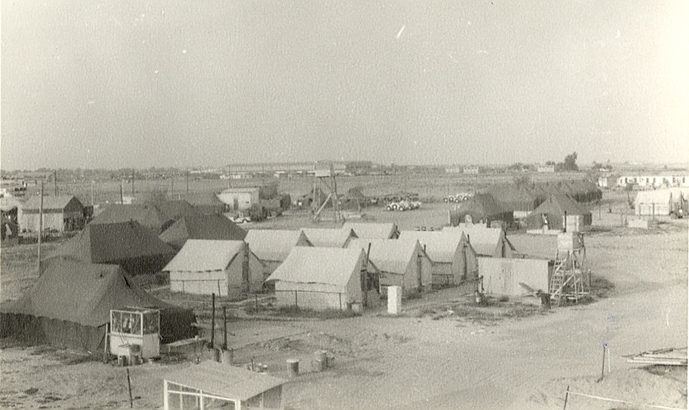 The Suez Crisis, 1956, was an international controversy involving Great Britain, France, Egypt, and Israel. President Nasser of Egypt sought Western Investment to help his government construct a hydroelectric dam. He was rebuffed by the International Community. As a result, his government nationalized the Suez Canal. This Canal was run by a consortium of French and British companies. Angered by the nationalization, and the explicit threat to their trade, the French and British conspired with the Israelis to retake the canal. The Israel Defense Force invaded Egypt. French and British paratroopers were sent to the canal to ‘protect’ it during the ensuing turbulence. In an effort to pre-empt the actions of the Superpowers, Lester Pearson’s Peacekeeping initiative would be implemented. It would be in 1956 that an international contingent of soldiers would embark for Egypt. While they came from different countries, they would serve under the flag of the United Nations. They came to stand as a shield between the fighting Egyptians and Israelis. Canadians were among those sent, and the 8th Canadian Hussars were among the Canadians. Camp Rafah, Egypt A Reconnaissance Squadron of the Hussars would make landfall in Egypt in 1958. They set out from Canada and arrived in Camp Rafah early in February. While there, the REECE Squadron would be responsible for 35 miles of the ‘International Frontier.’ As such, they would be equipped with Ferret Scout Cars and a number of supplementary vehicles. As Peacekeepers, the Hussars would be lightly armed, their main armaments being sidearms and rifles. To assist with logistics, Operational Posts would be constructed at the furthest extremes of the International Frontier. Winnipeg would be in the North and Toronto would be located in the South. Initially, these outposts were sparse; However, as the mission progressed, the Hussars were able to co-opt some base engineers to help improve the amenities at the outposts. Using the material at hand, these outposts would be equipped with look-out towers. From these posts, the Hussars maintained regular patrols of the Sinai Desert. Air Observation, Egypt 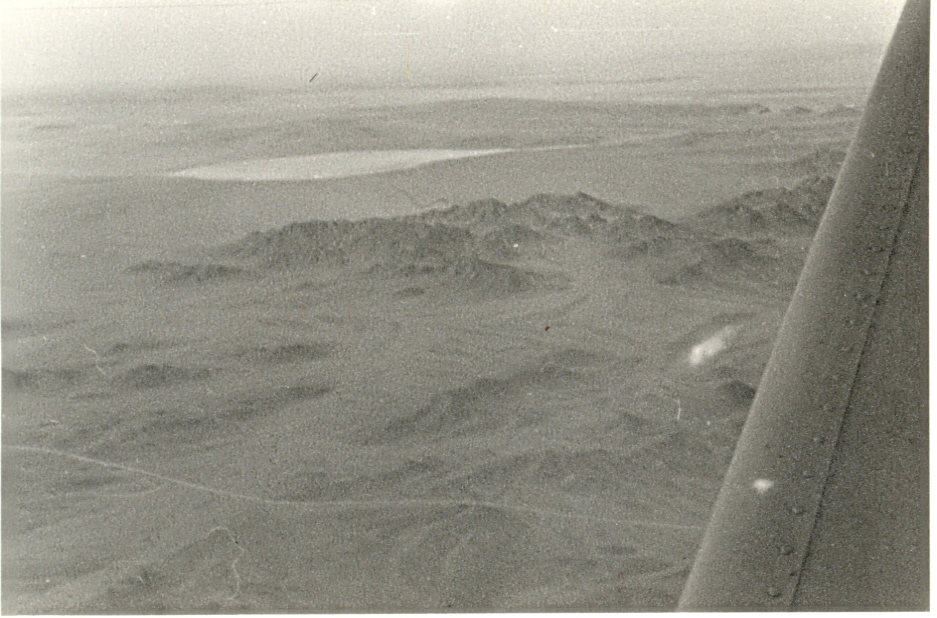 The Hussars ability to patrol the desert was greatly enhanced when the United Nations implemented aerial reconnaissance of the region. Three times per week, a Hussar would be sent with an RCAF pilot to observe the desert. This policy would enable the Squadron to more effectively police their border. This was important considering the fact that the Bedouins, desert nomads, frequently disregarded the border to make repeated trips into the desert. Peacekeeping was not without its tribulations. For example, several Hussars would come under enemy fire while out patrolling. As they were too far from the shooters to return counter-fire, the Hussars made a quick getaway by crossing to the Israeli side of the border. Once there, they were able to take temporary shelter with some Israelis, before being escorted back to the Egyptian side of the border. Outside of this incident, a more common danger to the Hussars were the presence of leftover mines from previous conflicts. For the Hussars, most of these mines were of no concern. The only exception being the deliberate planting of a mine on the Squadron’s patrol route. Fortunately, no Hussars were killed, although several were wounded. One of the final incidences in Egypt occurred when the Squadron captured Israelis who had conducted a raid against Bedouins in Egypt. The Israelis would be promptly released back to Israel, where they were punished for their actions. 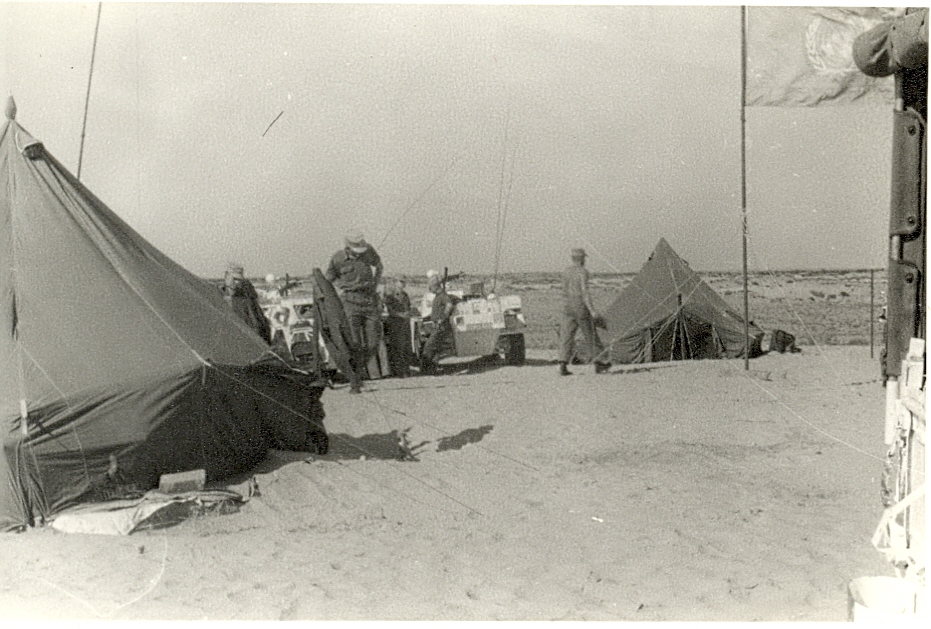 Hussars Outpost, Sinai Desert Ultimately, the Hussars would be repatriated back to Canada in 1959. Their mission to Gaza had been a success. The Hussars left behind a border that was more secure than when they had arrived. Additionally, their efforts at improving the infrastructure on the International Frontier would be key to the success of future deployments to that area. In a few short years, their comrades in ‘A’ and ‘D’ Squadron would return to the same region to pick up where the Reconnaissance Squadron had left off.
Guiding the 8th Hussars through some of its bloodiest fighting in the Second World War, the "trusty and well-beloved George William Robinson Esquire" forged a reputation as one of the Regiment's greatest and most well-respected commanding officers. Robinson assumed command of the 8th Princess Louise's New Brunswick Hussars in 1942, after joining the Regiment as a Major. Robinson proved himself early on, and he was promoted to Lieutenant-Colonel (LCol) by June. Upon taking command, Robinson sought to transform the Hussars into a competent fighting force, capable of facing battle hardened Axis troops. Initially, some of the Hussars, mostly Maritimers, were apprehensive about having a native Ontarian as their Commanding Officer. This soon changed, however, as the men quickly came to realize their new leader was not only a highly effective commander, but one who cared deeply for their safety and well-being. Under Robinson's command, the Hussars embarked on an extensive training program. The new C.O. understood well the gravity of the situation facing the men, and thus ensured no stone was left unturned. Nevertheless, Robinson was a fair man, and ensured everyone under his command received downtime when deserved. As time progressed, the men forged close bonds. They would soon be put to the test.
In late 1943, the Hussars were bound for Italy. Robinson remained in command, overseeing the trip to the peninsula. While on Italian soil, he continued to work tirelessly in his role, recognizing that the safety of the men ultimately rested on his shoulders. Here, he gained a reputation for being meticulous, often planning every operation down to the last detail. Despite his attention to detail, Robinson did not get bogged down in the minutia of administration - he was a soldier with good instincts who led from the front. At the Melfa River, Robinson and his men received their baptism of fire. The Regiment was ordered to exploit a breach in the Hitler line and form a beachhead across the river. Colonel Robinson moved into position aboard his Sherman tank, equipped with a false gun to allow space for a desk. As the battle progressed, a reconnaissance troop was surprised by a force of German paratroopers. The Colonel quickly committed A Squadron to their defence. Alas, the Hussars suffered their first casualties of the war. No matter what he did, in war death was inevitable. The loss of men under his command weighed heavily on Robinson's mind. Following the heavy fighting at the Hitler Line, the 8th Hussars continued operations in the Italian theatre under Robinson's command. The Colonel continued to distinguish himself in subsequent battles, securing his reputation as a highly capable commander of armoured forces. Meanwhile, he continued to forge close ties with his men, including Hugh Riley, a Hussar who sadly passed away in May, 2019 at the age of 103. Thanks to his commitment to excellence, as well as an unyielding concern for his men, Robinson, the outsider from Ontario, became greatly admired by the Hussars. On Dec 3rd, 1944, LCol Robinson received word he would be promoted to Brigadier and was to be posted to North-West Europe, assuming command of the 2nd Armoured Brigade. The Hussars were saddened to see him go. One remarked: "We were proud of his promotion, proud for him and proud for the Regiment. But an awful sense of loss went through all of us when we realized what it meant. He'd made us as a Regiment. He'd taken up there in England when we were far from ready and he'd turned us into a unit and a damn good unit. There is no doubt that his tough training saved us lives and casualties. He fought us well. You couldn't have asked for a better man, anyway you want to look at it. We were awful, awful sorry to see him go. A lot more than one man went when Col. Robinson went." For his distinguished service, Robinson was awarded numerous medals including the Commander of the Order of the British Empire (OBE), a Croix de Guerre with Palm (France), and a Knight of the Order of Orange-Nassau. He also received a Citation from His Majesty King George VI, and was mentioned in dispatches for his good leadership and inspiration to the men under his command. Brigadier Robinson passed away in 1971. Lieutenant-Colonel James Domville was born in Belize on 29 November 1842. He would emigrate to New Brunswick at the age of 18. In New Brunswick, Domville would play an important role in the development of the 8th Regiment of Cavalry, i.e., the 8th Hussars. He first joined the militia in 1866. He would be required to take to the field when the threat of a Fenian raid cast its shadow upon the province. In 1878, Domville would find himself joining the 8th Regiment of Cavalry in Sussex, then under the command of Lieutenant-Colonel John Saunders. 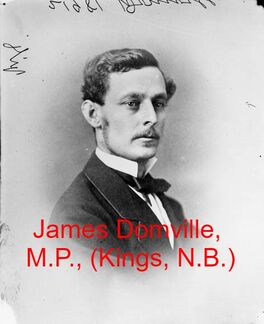 As a major with the 8th Cavalry, Domville would lead a contingent of soldiers to provide an escort for the Governor-General, The Marquis of Lorne, and his wife, Her Royal Highness Princess Louise, during their visit to Saint John in 1879. Moreover, Major Domville would greet the distinguished couple when their train stopped in Sussex. This meeting with the Princess would be fortuitous. The charm of the Princess would convince the men to approach her in an effort to have her more permanently associated with the regiment. In the end, she would oblige the regiment and, in 1884, the regiment would be re-designated the 8th Princess Louise's New Brunswick Regiment of Cavalry. However, before this could occur, John Saunders would die, leaving the Lieutenant-Colonelcy vacant. Major Domville, a member of the regiment for only two years, would be appointed commanding officer in 1880. Domville would command the Regiment for nineteen years, becoming the longest serving Commanding Officer in the Regiment's history. Under his leadership, the 8th Hussars became one of the most highly respected cavalry regiments across Canada. Moreover, during his tenure with the regiment, Domville would serve the people of New Brunswick as a Member of Parliament. First, as a conservative under the auspices of Sir John A. MacDonald, 1872-1882. Early in his political career, Domville almost sparked a fight on the floor of the House of Commons after calling another MP a 'Bankrupt.' Thankfully cooler heads intervened before this could occur. Ultimately, during his time with the conservative caucus in Parliament, Domville found that he was often at odds vis-à-vis his party's polices. It did not help when Sir John A. MacDonald backed a rival in his riding, leading to his defeat. As such, he would eventually run for the Liberal party and was re-elected under their banner, serving from 1896-1900. Following this, in 1903, Domville would be appointed to the Senate by Sir Wilfrid Laurier. He would serve in the Upper Chamber until his death at age 78 on 20 July 1921. Domville's tenure as commanding officer would be remembered fondly by a great many people. He ensured that the regiment always gave its best. For example, during the 1881 Dominion Day celebrations, the regiment would parade with finesse for the visit of the Governor-General, the Marquis of Lorne. However, it would not always be easy for Domville, nor the regiment. A poorly functioning economy would limit the funds directed at the militia. Yet, Domville would not allow this to drastically impact the operation of the regiment. He implemented a rotational training program for the regiment's seven troops. Ultimately, Lieutenant-Colonel Domville's leadership would ensure that the 8th Cavalry remained a top-notch militia regiment which was acknowledged on several occasions by the Federal Government. Despite the success of Domville's tenure as CO, his last few years would be marked by tension within the regiment. A bitter animosity would stifle the relationship between the CO and his second-in-command, Major Alfred Markham. It seemed that the Major, as well as some other officers, believed that the Domville had been CO long enough. Eventually, Alfred Markham would be appointed as commanding officer of the regiment in 1899. He lasted a little over a week. The dispute between the two men would be concluded when higher authorities intervened, retiring both Lieutenant-Colonels James Domville and Alfred Markham in 1899.
Besides this, Domville was active in several business pursuits in his adoptive province and across the continent. He helped develop the Albert County shale fields. He also financed a steam ship that carried passengers to the Yukon during the Klondike Gold Rush. As well, on the 14th Dominion Day, i.e., Canada Day, Lieutenant-Colonel James Domville would parade down Broad Street of Sussex. He would be one of 3000 soldiers that turned out to celebrate with the Governor-General. The impact of nineteen years of service would leave an indelible impact on the regiment, and contribute to its future successes. United Nations involvement in Cyprus began in earnest following outbreaks of violence between the island’s Greek and Turkish communities. After nearly one-hundred years of British rule, the Mediterranean Island of Cyprus gained independence in the summer of 1960. In subsequent months, the island was plagued by political instability and growing hostilities between Greek and Turkish Cypriots. British efforts to reach a peaceful settlement proved unsuccessful and by 1963, both camps were engaged in open conflict. In response, Turkey threatened military intervention, while the military junta in Athens continued to support aggressive action taken by Greek Cypriots. To its credit, the United Nations was able to act relatively swiftly. Following appeals by the British government and Greek Cypriot community, the United Nations Security Council (UNSC) unanimously adopted Resolution 186, which called for the creation of United Nations Peacekeeping Force in Cyprus (UNFICYP), aimed at restoring law and order to the island. Shortly thereafter, a 6 500-strong United Nations contingent arrived on Cyprus to begin its mission. The 8th Hussars would soon join the mission, serving as UN peacekeepers. In January 1966, 'B' Squadron of the 8th Canadian Hussars learned that it would not be headed to Egypt, as the men had anticipated. Instead, they would be headed for Cyprus to join the newly christened UN peacekeeping force on the island. With Major St. Aubin in command, the main force left Canada on 13 April 1966 for a six-month tour with the United Nations. While on the island, the Squadron had three main roles: escorting convoys of Greek Cypriot civilian vehicles through Turkish Cypriot areas, long range reconnaissance patrols, and the manning of observation posts in the North-West sector of the island. Despite being peacekeepers, their mission was still fraught with risk. Fighting could break out at any time, and the island was littered with unexploded ordinance. Upon their island arrival, the Hussars began repair and maintenance on a collection of formerly civilian houses that would come to be known as Fort Worthington, the place the men would call home. Once the necessary preparations were made, the Hussars got to work. Operations typically involved patrolling through contested areas, and monitoring the activities of belligerents. The mere presence of UN peacekeepers was hoped to prove a stabilizing presence. Such missions were often conducted outside the wire, far from the safety of the camp. On two separate occasions, the Hussars spent periods of 29 and 33 days on continuous duty outside the camp. Conditions on the island were hot and dry, so the battle with dehydration was constant. With their mission complete, the men returned to Canada on 14 October 1966. During their deployment, the Hussars suffered one casualty: Trooper L. Nass. By 1974, the situation on Cyprus had deteriorated considerably, following a violent coup d'état orchestrated by hard-line Greek Cypriots. The response from Ankara was swift and brutal. Within five days, Turkish Armed Forces launched an amphibious invasion of the island. Once again, tensions threatened to boil over as Turkish troops seized vast swaths of territory on the island’s northern side. Shortly thereafter, thanks to international pressure, a cease-fire was signed, and the perpetrators of the coup on the island were removed from power. From this point forward, however, the island would be formally divided by what became known as the Green Line, with Greek Cypriots administering the south, and Turkey administering the north. By mid-June, 1978 the Hussars were once again making preparations for deployment to Cyprus. Exercise GREEN LINE was held towards the end of July, and simulated the conditions of the buffer zone separating Greek and Turkish forces. The Hussars were tested on their reactions to a wide range of possible incidents designed to get the men accustomed to peacekeeping, including the manning of mock outposts de-escalation training. Once their training was complete, the men were ready for deployment. On 21 September 1978, the 8th Hussars departed Petawawa for a six-month tour in Cyprus under the command of Lieutenant-Colonel Billings. This time, their task was to maintain peace in the volatile capital city of Nicosia; no easy task given the proximity of Greek and Turkish forces in the city. Upon arrival, the Regiment began to man twelve observation posts stretching from east to west. Meanwhile, Regimental Headquarters Reece troop patrolled the entire line, day and night. During their deployment, most of the contingent was lodged at the Ledra Palace, once a five-star hotel. The rest of the men were barracked at the Blue Beret Camp and Camp Maple Leaf. While in Cyprus, the Hussars were treated to a number of high-profile visitors. These included the Minister of National Defence, the Colonel of the Regiment, TV-host Michelle Finney, Miss Edmonton Eskimo, and Miss Grey Cup, among many others. Additionally, each soldier was given a two-week break during the tour to either visit the island, or head to another country. Most soldiers opted to visit their wives at CFB Lahr.
This time, the tour went off without a hitch. The men recall that the six months passed relatively quickly, thanks in part to the pace of operations. Thanks to countless amenities on the island, along with visits from high profile entertainers, morale remained high throughout the deployment. In April 1978, the Regiment returned home to CFB Petawawa. Today the conflict in Cyprus remains frozen in time. The island continues to remain divided, and the United Nations retains a small presence there. The Battle of Coriano - The 75th Anniversary By Stephen Wilson, 8th Hussars Museum, Sussex, NB10/16/2019 The 8th (NB) Hussars played an important role in the Italian Campaign of the Second World War. One of its greatest successes was during the Battle of Coriano near the Adriatic Coast. This battle forged the Hussar’s reputation as one of the best Canadian Armoured Regiments.
In late August of 1944, the 8th Hussars were very much in the fight for control of the Gothic Line, the last and by many accounts, the most fortified line of defence remaining on the Italian boot. On August 29, the Hussars moved up to their designated outpost zone. They were supposed to have a few days to organize and prepare for battle but as often happens in war, the original timing of attack was changed. It was learned that the Germans were in fact unprepared for a possible attack. Yes, they had the fortifications in place but not the manpower as they had suffered great losses in recent days. It was obvious that this was the time to attack before the arrival of German reinforcements. New Brunswick boys proved their mettle in this success. Howard Keirstead, Bob McLeod, Cliff McEwen, Ron Lisson, Frenchy Blanchet, Jack Boyer and Padre Bill Burnett all distinguished themselves. Their leadership, intuition, determination and self-sacrifice were central to the Hussars movements and ultimate success over the next few days. By September 1, The Gothic Line was no more. The Hussars had played an important role here. They were exhausted and had suffered many casualties but there was another objective which had to be taken. The Hussars moved on to Coriano, a farm village perched on a ridge. This was yet another German strongpoint that had to be cleaned out before the allied forces could move on to the Marono River and Rimini. A well-planned attack would be required in order to advance. By September 3, the Hussars were back in the thick of battle. On September 4, it became clear how strong a foothold the Germans had at Coriano as they let loose on the 8th Hussars “B” squadron. “A” squadron came quickly to assist. Heavy gun fire was exchanged at a range of 1000 meters. During the day, 2 “B” squadron tanks became trapped on a riverbed. It was a precarious situation for the two tank crews: 6 men in total. Earl Hilchie and Charlie Stevenson were killed by German gunfire. Charlie Stevens was paralysed below the waist after being hit in several places. Howard Keirstead received 7 bullets to his leg and two more in the arm. John Wentworth sustained serious leg injuries. Charlie Stevens perished on the way to the field hospital. This story is elaborated in greater detail in the museum. I encourage you to learn more about the heroism of Keith Fisher and Howard Keirstead. Theirs is an incredible story of determination in the face of insurmountable odds. After this tragedy, the advance on Coriano was paused. It was necessary to tweak the plan. Lee Windsor succinctly sums up the situation in his book “Steel Cavalry: The 8th (NB) Hussars and the Italian Campaign” as the Hussars prepared for another assault on the ridge. Lee states, “The opponent was fresh, strong, prepared, well dug-in, concealed and held excellent defensive ground overlooking the Canadian front. The enemy force on Coriano Ridge was the strongest the 8th Hussars had ever faced in terms of both men and weapons. The mission now was not to break through the enemy line and seize a glorious prize but to wade into a powerful enemy force and destroy it”. As the Hussars prepared for battle, they also had to contend with constant shelling and torrential rains which made navigating the terrain a real challenge. Changes in leadership were made as a result of injuries and sickness. Gordon Bruce, the new commander of “A” squadron, brought his troops in line with the Perth Regiment. Tim Ellis’ “B” squadron was paired with the Cape Breton Highlanders and Cliff McEwen remained with “C” squadron who were linked with Toronto’s Irish Regiment. The second Battle of Coriano began on September 12. The front came alive with the sounds of artillery units firing on the Germans, an attempt to soften up the enemy line in preparation for the coordinated advance of the infantry and armour. Allied success was minimal in these initial steps as the Germans had their numerous guns shielded in ravines and reverse slopes behind the ridge. The forward slope of the ridge was protected by the Besanigo Stream and hundreds of mines which slowed down the advance of infantry and tanks. The Canadians would have to navigate this perilous slope. The Germans, meanwhile, were positioned on a plateau which provided them with an excellent view of the valleys in front of and behind Coriano. The buildings of the town were central to the German defense as they were constructed of thick stone walls with a church and a castle serving as a central fortification within the village. The key to crossing this plateau and seizing the ridge was to do so with the infantry leading the charge under the cover of darkness. The Perth Regiment would proceed on the left and the Cape Bretoners on the right. Once there, the engineers would clear the mine fields opening up two crossings over the Besanigo for the Hussars. “A” and “B” squadron then would pair up with their respective infantry cohorts to take control of the ridge. Once done, McEwen’s “C” squadron and the Irish would take on the bastion. By 8:30 on September 13, all three Hussar squadrons had successfully dug into their objectives only to learn the Germans were preparing a counterattack. The allied response was swift as long-range medium and heavy artillery hammered the Germans, followed by an Allied bomber attack on the convoys. The counterattack was no longer a menace. However, the Coriano fortress was still a threat as survivors of the 15th Panzer Grenadier Regiment remained in place and they were backed by a Panzer regiment. By mid-morning, Tim Ellis’ “B” squadron along with the Cape Breton Highlanders slowly advanced pounding each building along the way. The Highlanders then went in with grenades and bayonets to clean out the German infantry. “C” squadron and the Irish Regiment moved in at dawn. The town appeared abandoned. McEwen’s squadron was instructed to advance on the church and the castle. The 15th Panzer Grenadiers still had men there who were not about to surrender. At 10:25, the Irish Regiment found itself cut off and surrounded. “B” and “C” squadrons and the Irish were facing a vicious battle. German infantry positioned in the houses surrounding the town piazza fired Panzer faust rockets at the 7 Shermans. The tanks responded and the town square became a close quarter battlefield. The Hussars felt it best to get out of this dangerous situation and withdrew to the northeast edge of town. From here, they shot at targets to support the infantry’s house cleaning operation throughout the day. As the sun went down, enemy mortar and artillery fire continued to hammer the infantry units and the Hussars. To make the circumstances even more difficult, the Germans had received fresh troops which they positioned in front of the Marono River. Also, the Germans still held control of the castello. The Hussars had two essential tasks to perform:
The Hussars had been involved in battle for 18 consecutive days and had lost 25 men. Major Cliff McEwen and Major Tim Ellis both were awarded a Distinguished Service Order for their “skill, boldness and handling” of their squadrons in the face of the enemy during this two-week period. Lieutenant Colonel George Robinson received the Distinguished Service Order, and was appointed an officer of the Order of the British Empire, for his service with the Hussars and especially for his leadership at Coriano. It was also during this two-week period that a new four-legged recruit was added to the ranks of the 8th Hussars. During the first attack on Coriano on September 4, “A” squadron spotted a young foal pacing in the middle of the battlefield. She was hurt, hungry and circling the body of her mother killed by a shell. The foal was taken back to the regiment’s aide post where her wounds were tended and she was given a shot of rum. She was named Princess Louise and became the regimental mascot. She would be secretly transported with the Hussars until their last actions in Holland, and after the war, she was brought home where she became a treasured symbol of the regiment and its illustrious service overseas. The Battle of Coriano remains one of the defining battles of the Hussar history. The regiment truly distinguished itself here during the Italian campaign as it demonstrated its mastery of infantry-armour cooperation during battle. Today, we honour Coriano’s place in the Hussar history. We remember the Hussars who fought there and came home and those who paid the ultimate price in the name of freedom. Lest we forget. Bibliography Windsor, Lee. Steel Cavalry: The 8th (New Brunswick) Hussars and the Italian Campaign. Fredericton NB: Goose Lane Editions, 2011. Zuehlke, Mark. The Gothic Line: Canada’s Month of Hell in World War II. Vancouver: Douglas & McIntyre, 2003. Presented by Stephen Wilson at the 8th Hussars Museum on September 28, 2019 to commemorate the 75th anniversary of the Battle of Coriano. George Lichtenberger Corporal B-257 July 8th, 1922 - September 28th, 1944 8th Princess Louise’s (New Brunswick) Hussars Personal Information: George Lichtenberger was born in Sheffield, Pennsylvania on July 8th, 1922 to parents Joseph & Jennie Lichtenberger. He grew up in Warren, Pennsylvania, a city along the Allegheny River built on prosperous timber and oil industries. He attended and graduated from Warren High School. His father was a labourer and his mother was a housewife. His family belonged to the Roman Catholic Church, and he was the only child.[1] In June of 1941 the United States had not yet entered the war. George was young, single and unemployed at the time. He decided that it was his calling to go to Canada to join the forces fighting overseas. He was only 18 years old and had just graduated from High School when he travelled to Toronto, Ontario to enlist. He and his schoolmate, John Pesko, enlisted together on June 13th, 1941. George was 5 foot 7 and weighed 140 pounds. He had brown hair and brown eyes and was deemed to be in good health.[2] Military Movements: After his enlistment, he was first taken on strength by the #2 District Depot. George received training at Camp Borden and in Brantford, Ontario. He was soon transferred to the 8th Princess Louise’s (New Brunswick) Hussars unit of the 5th Canadian Armoured Regiment. Lichtenberger, along with Pesko and the other 8th Hussars embarked for England on March 21st, 1942, and disembarked March 29th. He continued his training in England until November of 1943, when the 8th Hussars would enter the Mediterranean theatre of war.The regiment embarked for Italy on November 14th 1943 and disembarked on November 22nd. George would fight with the 8th Hussars in Italy from November of 1943 to September of 1944.[3] The Final Days: The 8th Hussars were on the Adriatic coast of Italy in 1944. They had spent the summer resting and training for the difficult tasks that lied ahead of them. August was spent breaking through the Gothic Line - the last major German defence in Italy. Most of September would be spent at Coriano Ridge.[4] On September 28th, the 8th Hussars moved into the area of the Perth Regiment near the Rubicon River. That afternoon C squadron lost one tank on a mine while engaging a German Tiger Tank. The enemy tank took out another two tanks from C squadron and Major C. A. McEwen withdrew his troops. During this fight on the Rubicon River, C squadron destroyed one enemy Tiger Tank. The rain from the days prior had made the ground near the river soft and impassable so the squadrons remained there for the night. Once the men had regrouped it was reported that C squadron had one crew commander killed that afternoon; that was George Lichtenberger.[5] On September 12th 1944, only 16 days before his death, George was promoted to Corporal. He served in Canada, the United Kingdom and Italy over a total of 1204 days. He was awarded the 1939-45 Star, Italy Star, Defence Medal, War Medal and Canadian Volunteer Service Medal with Clasp.[6] Lest We Forget: Corporal George Lichtenberger was buried on site near Cesena, reported by Captain D. P. Rowland of the Irish Regiment. On October 5th, 1945 his family received a notice that George’s body had carefully been moved to a grave site in the war cemetery where the other Canadian soldiers had been buried. Corporal George Lichtenberger now rests at Cesena British Empire War Cemetery, plot 3, row G, grave 2. George was killed at age 22 and was survived by his father Joseph Lichtenberger and his mother Jennie Lichtenberger. [1] Military Service Files of George Lichtenberger obtained from Library & Archives Canada [2] Military Service Files of George Lichtenberger obtained from Library & Archives Canada [3] Military Service Files of George Lichtenberger obtained from Library & Archives Canada [4] Douglas How, The 8th Hussars A History of the Regiment, Maritime Publishing 1964, pp. 184-295 [5] Douglas How, The 8th Hussars A History of the Regiment, Maritime Publishing 1964, pp. 184-295 [6] Military Service Files of George Lichtenberger obtained from Library & Archives Canada Lest We Forget: Corporal George Lichtenberger was buried on site near Cesena, reported by Captain D. P. Rowland of the Irish Regiment. On October 5th, 1945 his family received a notice that George’s body had carefully been moved to a grave site in the war cemetery where the other Canadian soldiers had been buried. Corporal George Lichtenberger now rests at Cesena British Empire War Cemetery, plot 3, row G, grave 2. George was killed at age 22 and was survived by his father Joseph Lichtenberger and his mother Jennie Lichtenberger. John Lawrence Pesko Trooper B-258 8th New Brunswick Hussars (Princess Louise 5th Canadian Armoured Regiment Personal Information: John Lawrence Pesko was born on the 26th September 1922 in Warren, Pennsylvania. He was raised by John Pesko and Anna Pesko with three brother and four sisters.[i] The family belonged to the Roman Catholic Church. John Worked as a grocery store clerk and a log cutter at a saw mill in Warren. He had 6 months of experience when he enlisted.[ii] John graduated from Warren High School. John Pesko enlisted June 13th 1941 in Toronto, Ontario.[iii] He was 5 foot 8 and weighed 125 pounds and was deemed to be in good health.[iv] John had a brother who was also involved in the war, he was stationed at a naval air base in Norfolk, Virginia. Military Movements: After John enlisted in Toronto, Ontario, he received training in Brantford and Borden, Ontario. He left Canada for England on March 21st, 1942 and disembarked March 29th. He had further training in the U.K.[v] John then got on a ship, heading to the Mediterranean on November 14th 1943 and disembarked on November 22nd 1943. John was fighting his last battle in Italy, with the Italian Campaign. Over 93 000 Canadians fought in Italy during the Second World War. More than 6000 did not return home. The Final Days: During the Italian Campaign the Germans held the majority of the high ground. An allied attack in Italy helped distract the Germans from other fronts and convinced them to bring more men and equipment into this country and away from the west coast of France where the Atlantic Wall was located. The Hussars would see their first real action in May 1944. They would play a role in the Canadian advance through Liri Valley. The Hussars would assist in breaking the Hitler Line and help the allied forces secure the Melfa crossing. The 1st Canadian Infantry led the effort until the river was crossed and then the 5th Canadian Armoured Division took the lead to Ceprano.[vi] They began on 24th of May; they were trying to make their way to get new positions of the Melfa River. Hussar tanks were caught under heavy fire, 'A' squadron came to the rescue taking out 3 anti-tanks. On May 26th they were advancing closer and closer, while being under light fire throughout the day. On May 27th they reached point 107 and the remainder of the squadron was overlooking Ceprano.[vii] It had been a difficult advance with the Hussars suffering a few casualties. There were numerous troops on the west bank, but they could not engage due to not knowing where the forward troops were located. So, 'B' squadron decided to take a break. As they did so the Germans fired while the men were outside their tanks.[viii] John Lawrence Pesko was killed while taking a break when the Germans opened fire. John died along with four other men: Clinton Groves, Alan McGarty, James O'Reilly, and Alfred Lawton. John Pesko's family was notified that he that he was killed in action.[ix] John Pesko purchased Victory Bonds worth $150 and these were given to his mother, and he had also purchased $1500 in insurance; his parents were named as the beneficiaries. During John's time in the military he received the Defense Medal, War Medal, Italy Star, CVSM and clasp. Lest We Forget: John Lawrence Pesko is buried at the Cassino Military Cemetery plot 5, row J, grave 4.[x] John Lawrence Pesko died at the age of 21. He was survived by his father John (age 56), mother Anna (age 55), his brothers Michael (28), Francis (18), Eugene (15) and four sisters: Mrs. Richard Yaggie (33), Katherine (31), Genevieve (26), and Marion (23). Francis was at the U.S. Naval Air Base in Norfolk, Virginia, and only Eugene and Marion lived at home with their parents at the time of John's passing. Bibliography: Windsor, Lee. Steel Cavalry: The 8th (New Brunswick) Hussars and the Italian Campaign. Fredericton NB: Goose Lane Editions 2011 How, Douglas. 8th Hussars. Sussex, NB: Maritime Publishing, 1964 Archival References: Military service files of Trooper John Lawrence Pesko obtained from Library and Archives Canada Internet Sites: Veterans Affairs Canada, Dec. 16th 2015, https://www.veterans.gc.ca/eng/remembrance/memorials/canadian-virtual-war-memorial/detail/2609845 [i] Military file of trooper John Lawrence Pesko, Library and Archives, Canada [ii] Military file of trooper John Lawrence Pesko, Library and Archives, Canada [iii] Military file of trooper John Lawrence Pesko, Library and Archives, Canada [iv] Military file of trooper John Lawrence Pesko, Library and Archives, Canada [v] Military file of trooper John Lawrence Pesko, Library and Archives, Canada [vi] Douglas How The 8th Hussars, Sussex, NB: Maritime Publishing, 1964 [vii] Military file of trooper John Lawrence Pesko, Library and Archives, Canada [viii] Douglas How The 8th Hussars, Sussex, NB: Maritime Publishing, 1964 [ix] Military file of trooper John Lawrence Pesko, Library and Archives, Canada [x]Veterans Affairs Canada Dec. 16th 2015, https://www.veterans.gc.ca/eng/remembrance/memorials/canadian-virtual-war-memorial/detail/2609845 Biography courtesy of the Lest We Forget initiative of Belleisle Regional High School located in Springfield, NB A reflection on June 28th, 1919: The Treaty of Versailles and how it shaped World History in the 20th Century By Makayla ColeIntroduction: 100 years ago today, countries from around the world came together in the Palace of Versailles in Paris to sign a peace treaty in order to formally end the fighting of the First World War, and to prevent another war from ever happening again. Evidently, it was the terms of this treaty that resulted in a Second World War only 20 years later and an ongoing struggle to establish an international government to achieve World peace. From World Wars and genocides, to United Nations Peacekeeping missions, find out how the Treaty of Versailles has affected countries around the World over the past 100 years, and how it shaped the both the catastrophic and innovative events of the 20th Century. Ending WW1: The Great War, later universally referred to as the First World War, was the first mechanized global conflict - encompassing 32 nations and becoming one of the largest and deadliest wars in History. Originating in Europe through a network of alliances - emerging powerful nations were in imperial, military and nationalistic struggle with one another for centuries. It would only take one small spark to ignite the flames of the Great War in Europe, and the rest of the world, and that spark came June 28th, 1914. On June 28th The Archduke Franz Ferdinand, his wife Sophie and party were visiting the Balkan states that had previously been annexed by the Austro-Hungarian Empire. While visiting the Bosnian capital Sarajevo, the Archduke and his wife were assassinated by Gavrilo Principe, a member of the Serbian terrorist group, known as the Black Hand. As a result of this assassination, the Austro-Hungarian Empire declared war on Serbia, the outbreak of conflict between the two powers and other Balkan states that would be known as the July Crisis. The prolonged uprising creating a domino effect of war declarations throughout the European continent and abroad. By the end of August, Germany, Russia, France, Britain and Japan had all declared war. All of these major World powers immediately involved their international colonies and dominions. Britain and France who had been in alliance many years prior, formed the Triple Entente with Russia. Germany, the Austro-Hungarian Empire and eventually Italy, would form the opposing forces known as the Triple Alliance. Smaller nations fell to either side of the conflict. The fighting in Europe began in August of 1914 and was expected to be over by Christmas. However, it was clear by December that the fighting would continue for much longer. In 1917, the third year into the war, Russia pulled it’s forces out to concentrate on a revolution at home. In the same year the United States was brought into the conflict by direct attacks, or attempted attacks initiated by Germany. This included the sinking of the American passenger ship the Lusitania, the Zimmerman telegram asking Mexico to join forces with Germany in order to attack the United States, as well as Germany declaring unrestricted submarine warfare - meaning they would attack ships belonging to any nation, whether they were involved in the war or not. Initially, American President Woodrow Wilson declared neutrality for the country and stated they would not get involved with the overseas conflict. However, given the circumstances in 1917 considering the threat to the American people, he felt they had no choice. The fighting in Europe continued into the fall of 1918. It resulted in approximately 40 million total casualties. 20 million were deaths, half of those being military personnel and the other half, civilians. The guns fell silent at 11:00 a.m. on November 11th, 1918. On this date the armistice would be signed between the Entente and their opponent, Germany, in agreement to end all fighting on land, sea and air. This day became known as Armistice Day or as we know it in Canada - Remembrance Day. However, the Entente and Allied powers were still at war with one another until an official treaty was signed in June of 1919 to end the First World War on all terms. Photo: Universal History Archives Opening session of the Paris Peace Conference, January, 1919. In January of 1919 the remaining Entente powers, which became known at this time as the Big Three, organized the Paris Peace Conference. The Big Three consisted of the United States represented by President Woodrow Wilson, Britain represented by Prime Minister David Lloyd George, and France represented by Prime Minister Georges Clemenceau. Japan and Italy - as victors who had sided with the Entente at the height of the war - were also invited to attend the conference - Germany was not. The conference included diplomats from 32 countries. However, the five major victorious powers met informally 145 times to discuss and eventually implement all major decisions following the war. The Paris Peace Conference and informal meetings of the five powers ultimately resulted in the Treaty of Versailles. Photo: Edward N. Jackson, U.S. Army Signal Corps |
Welcome to the 8th Hussars Museum Archives
August 2021
|
